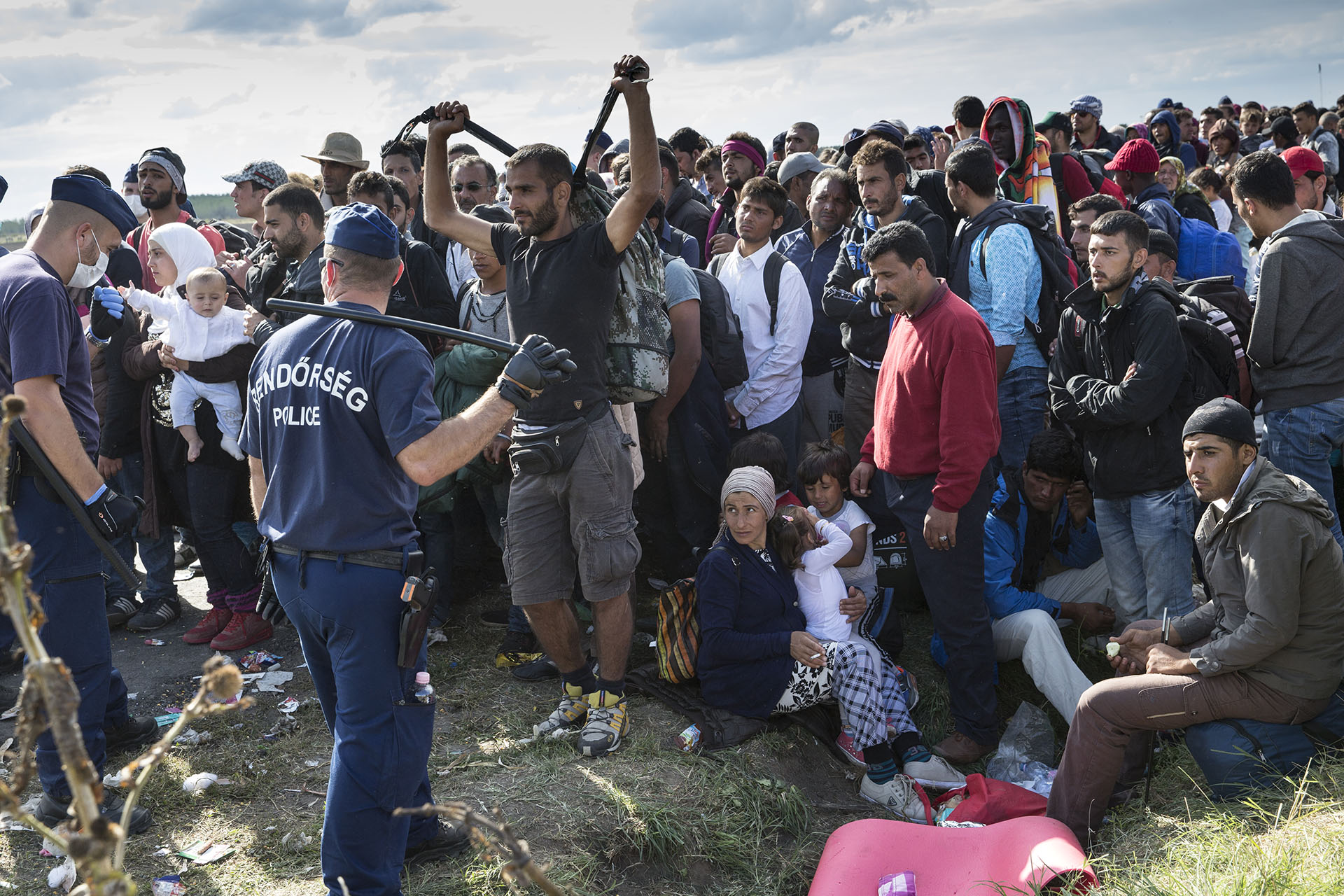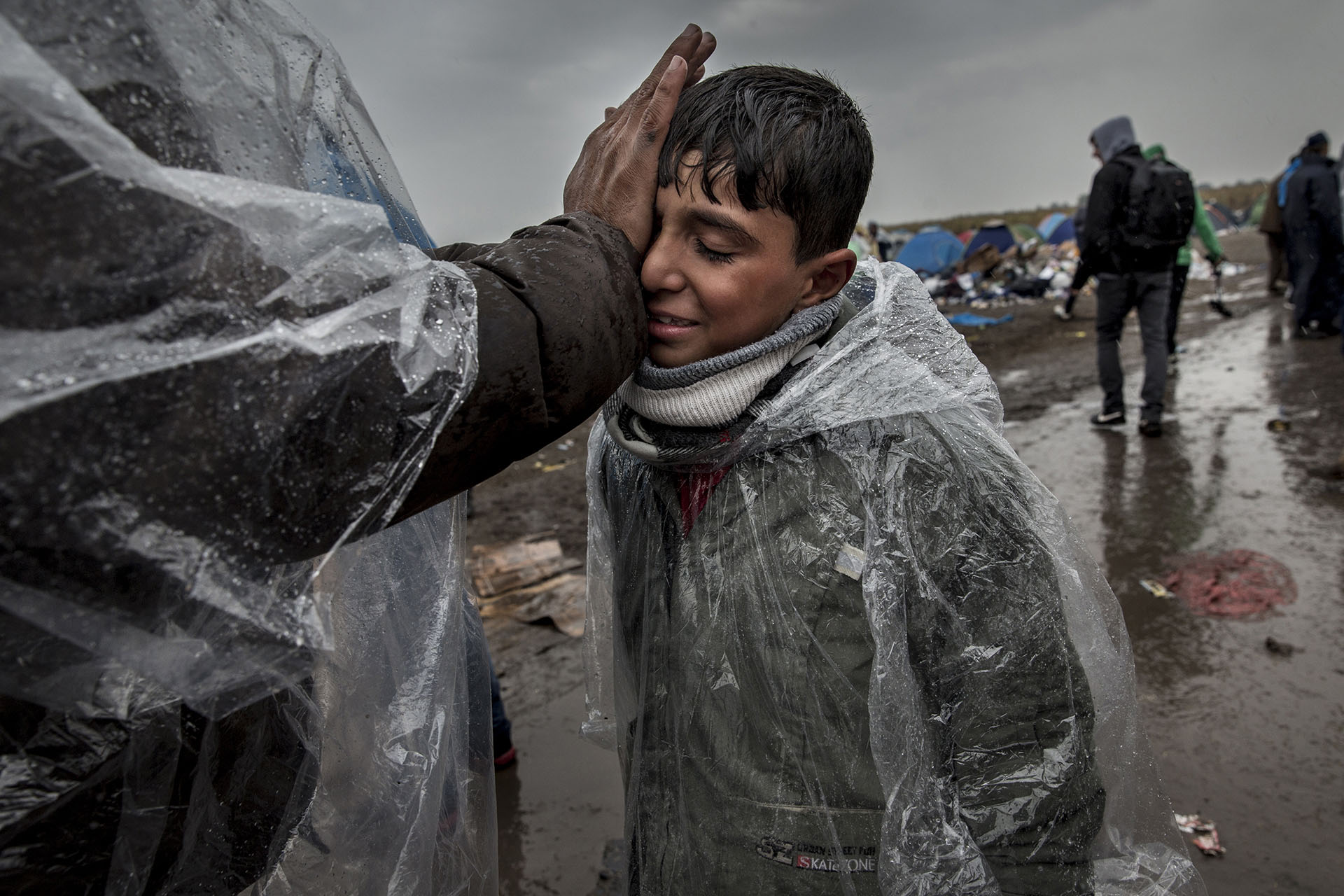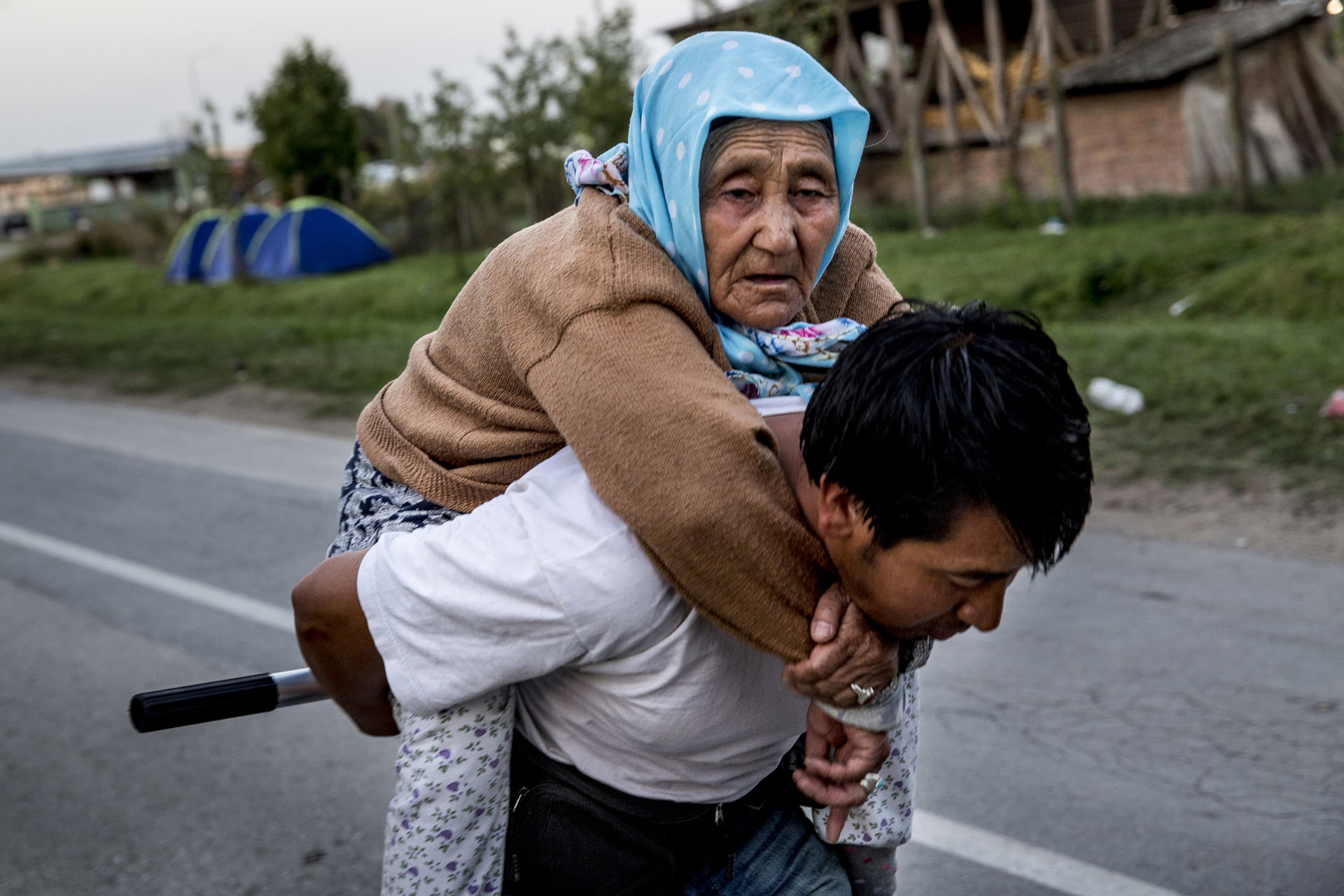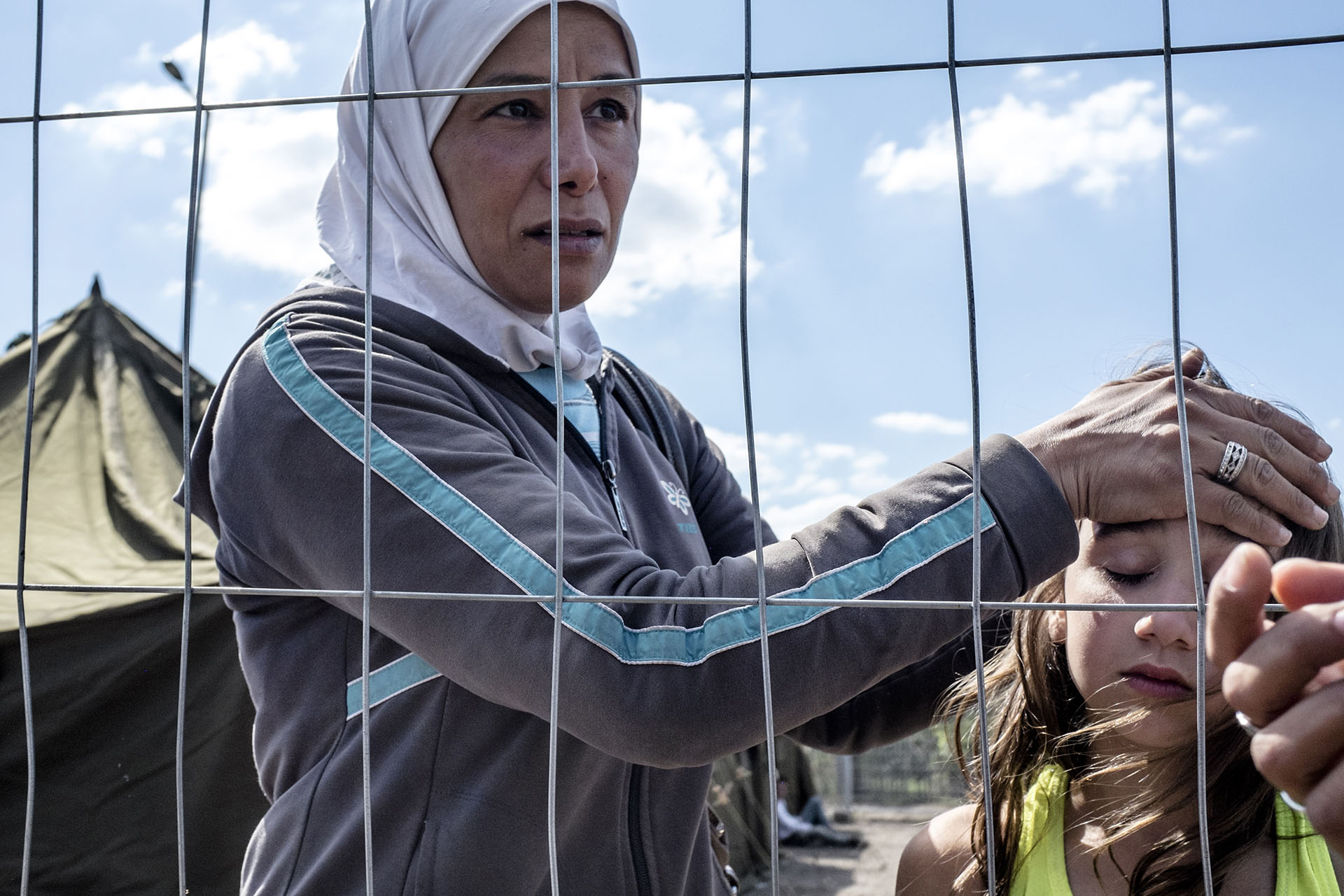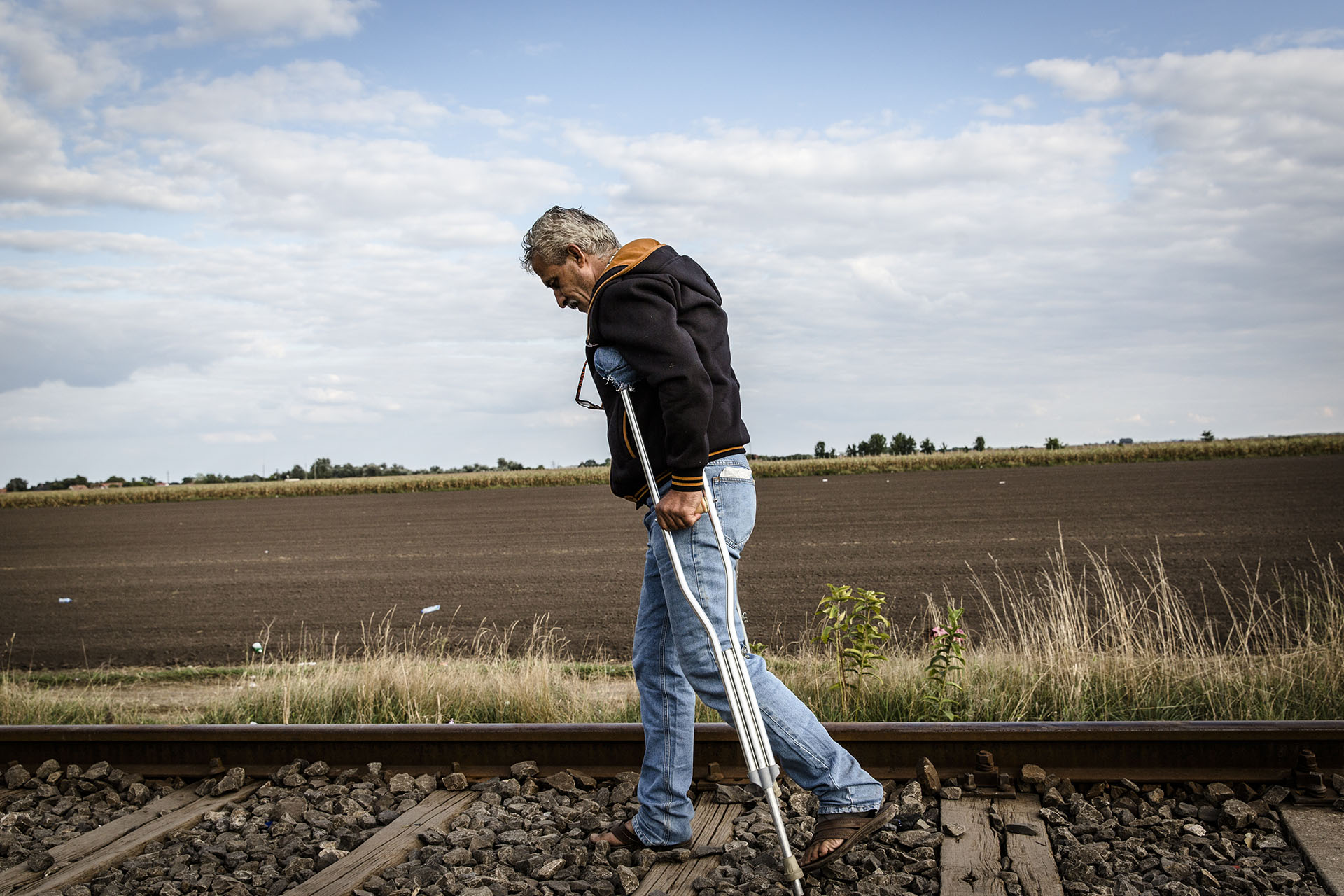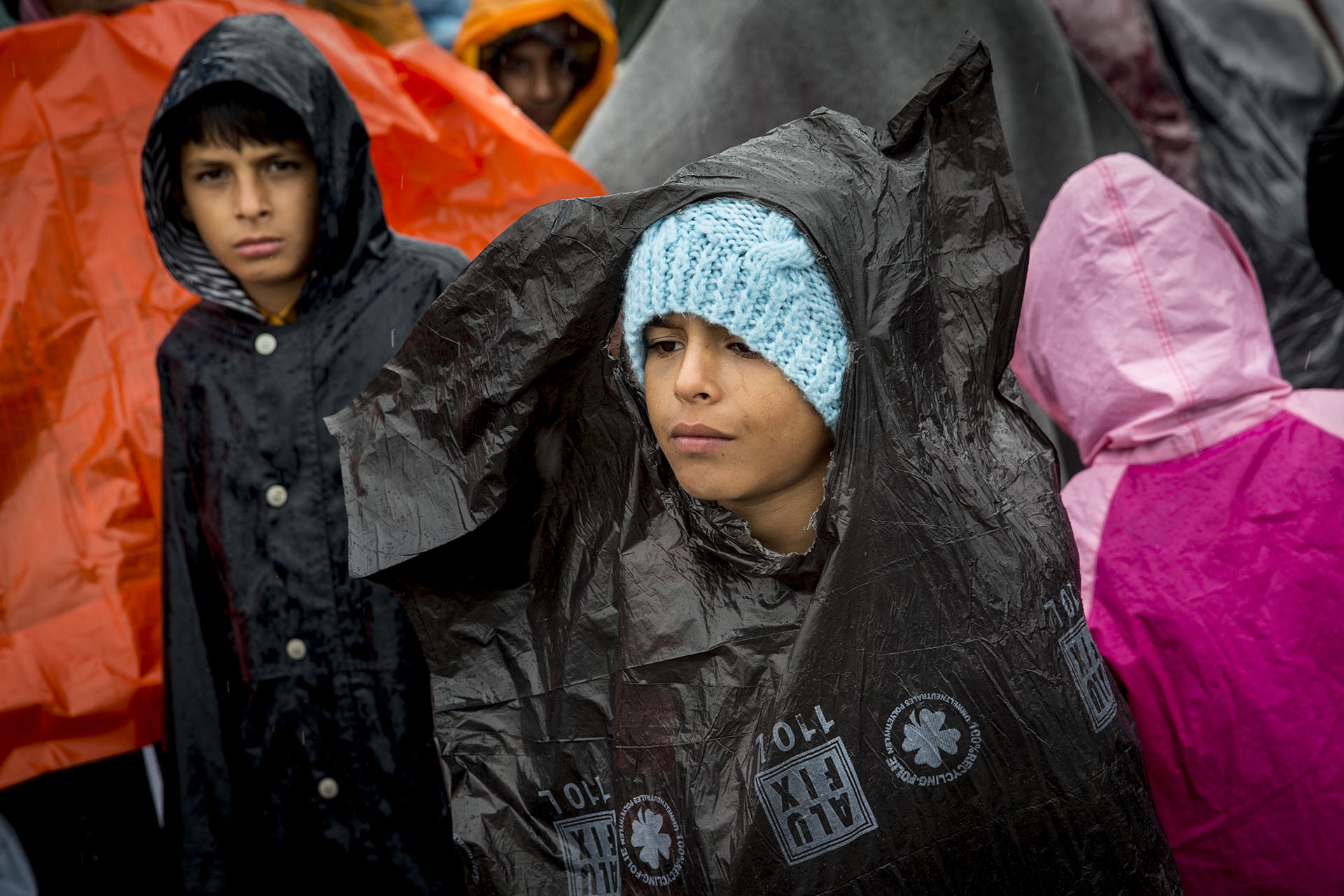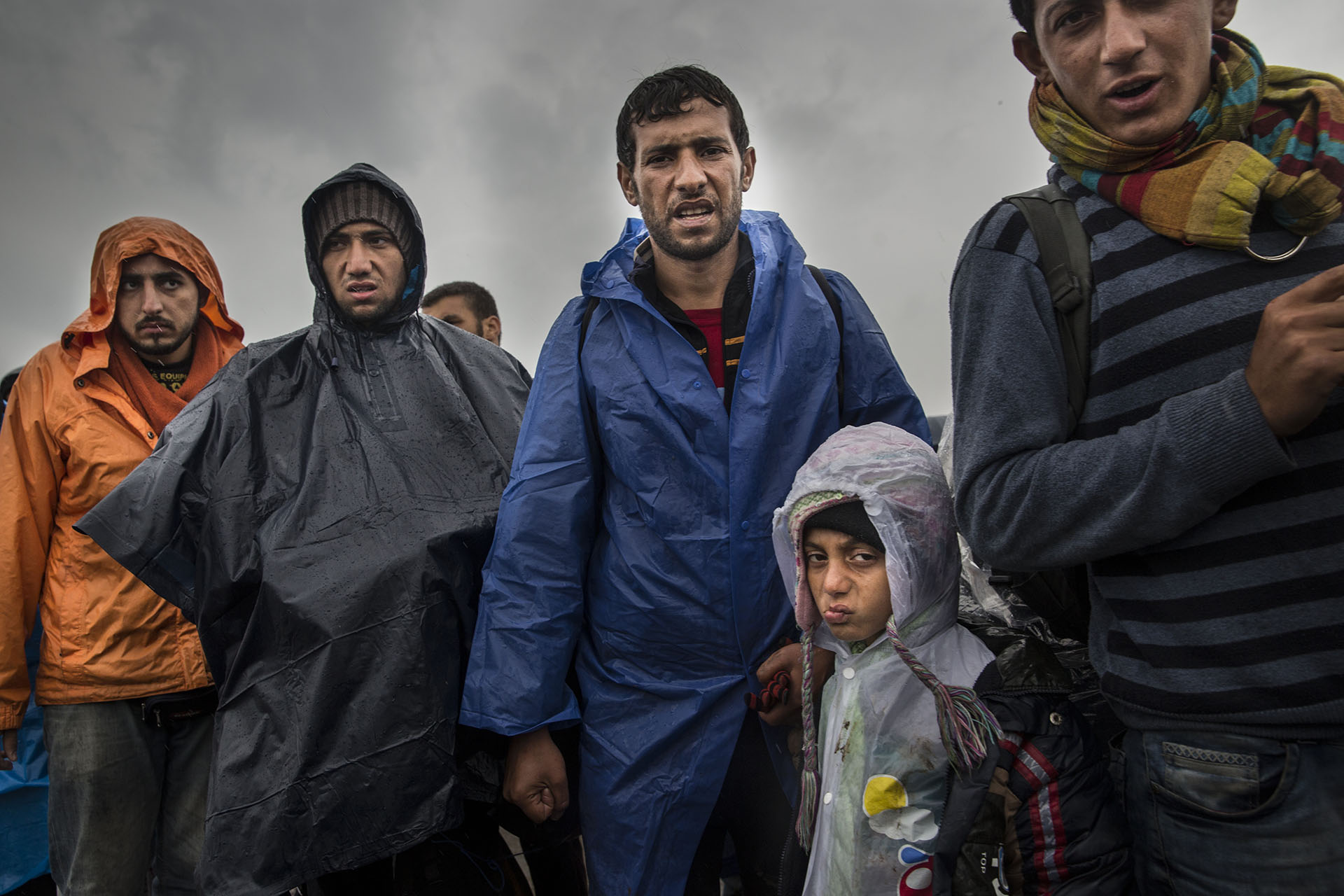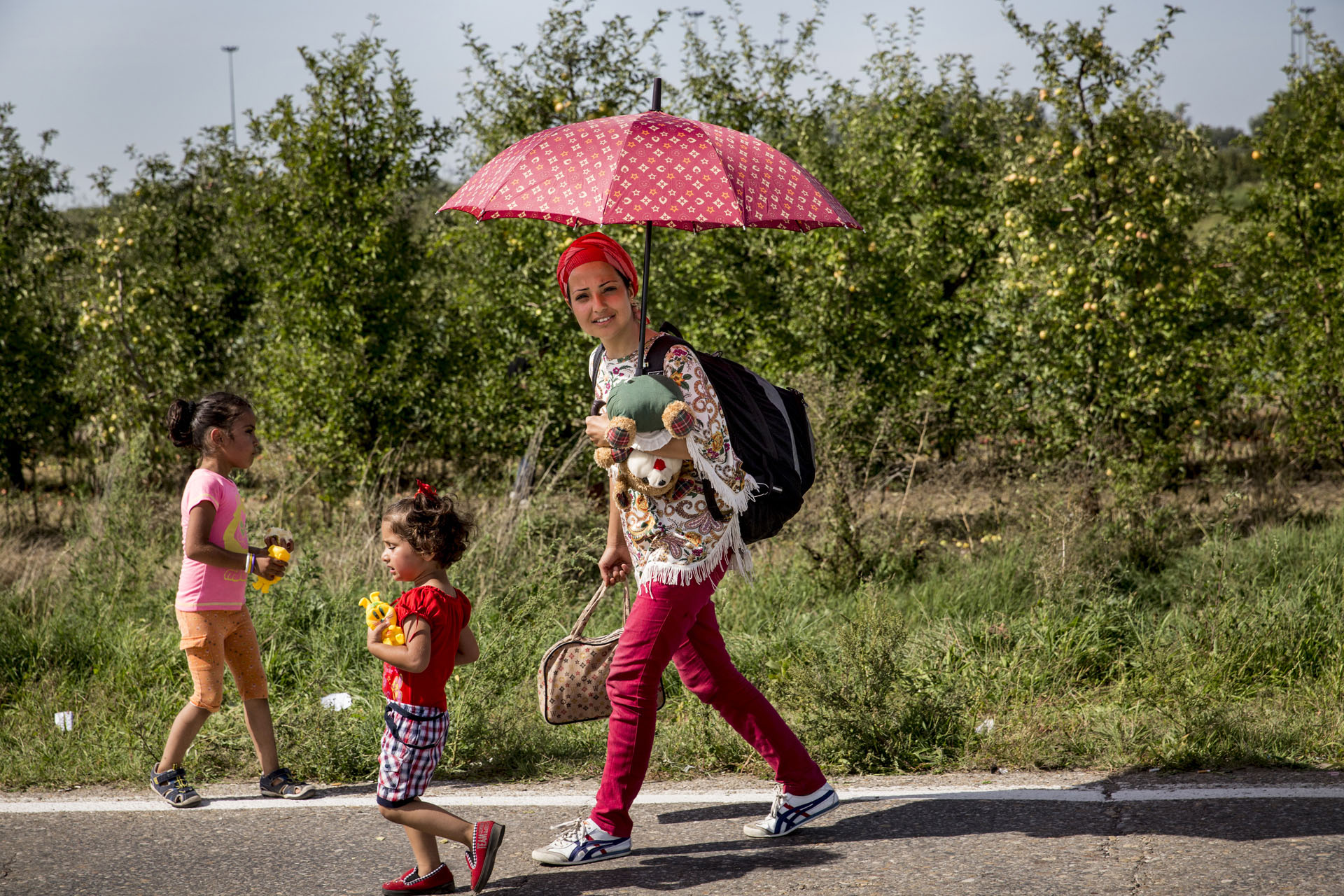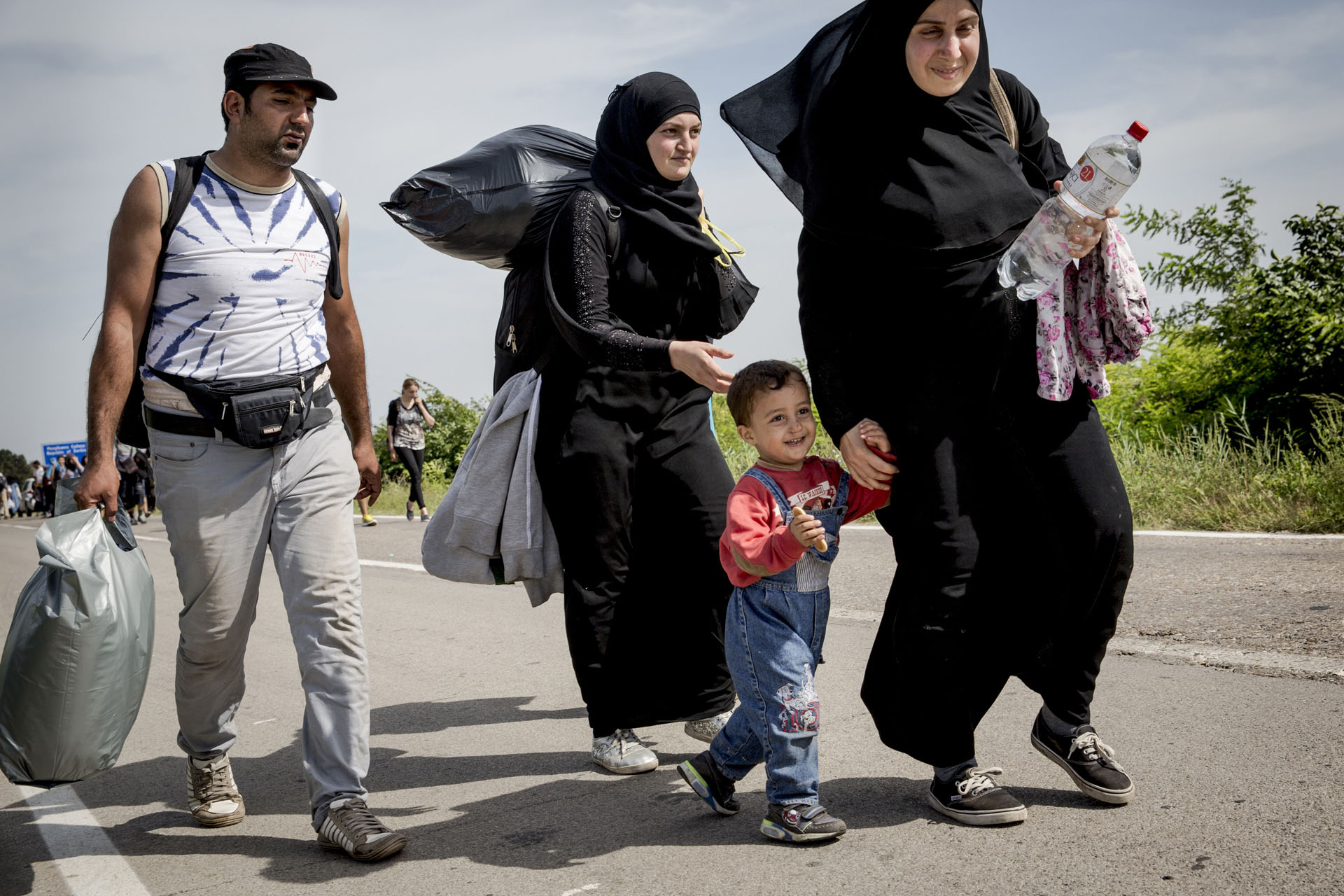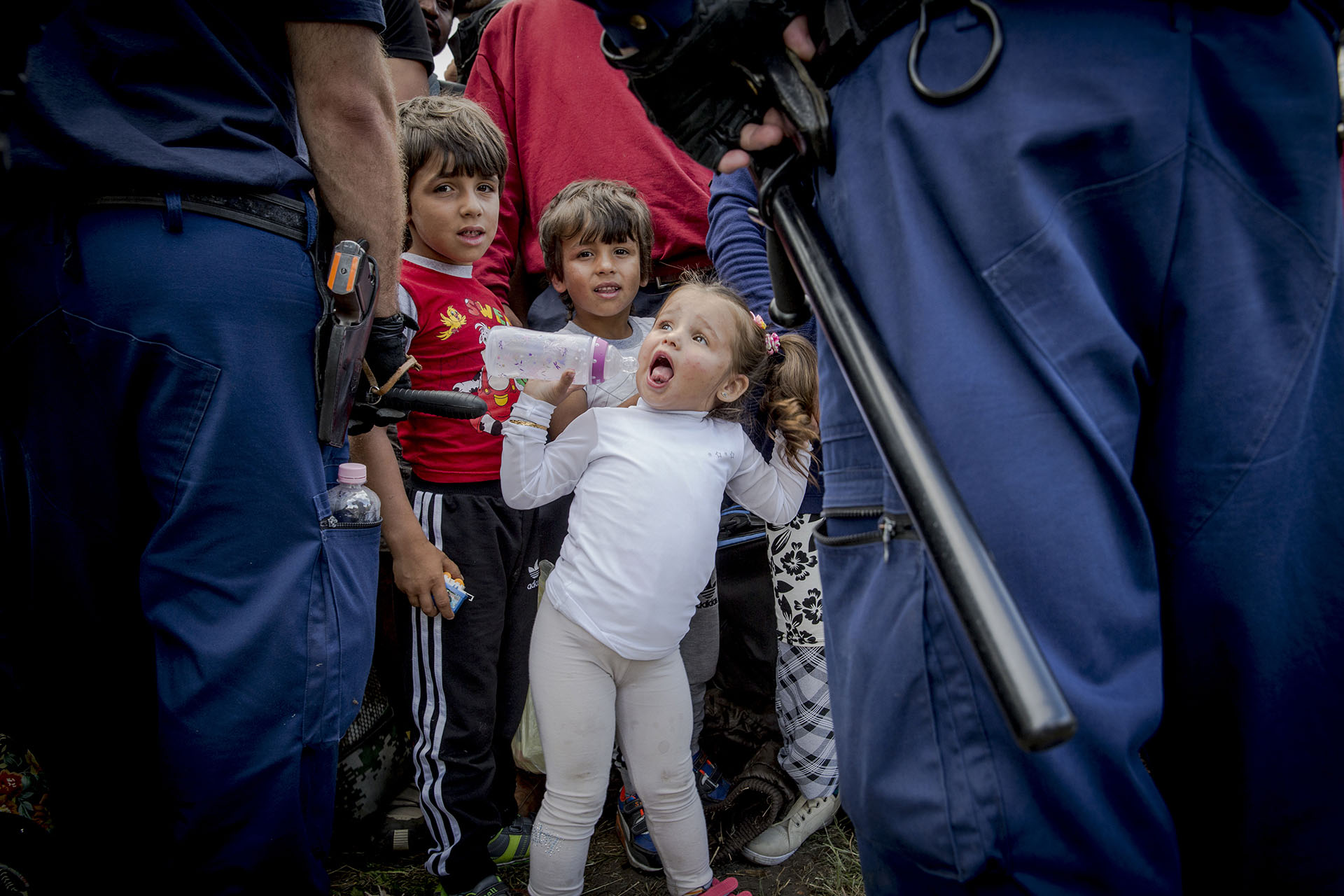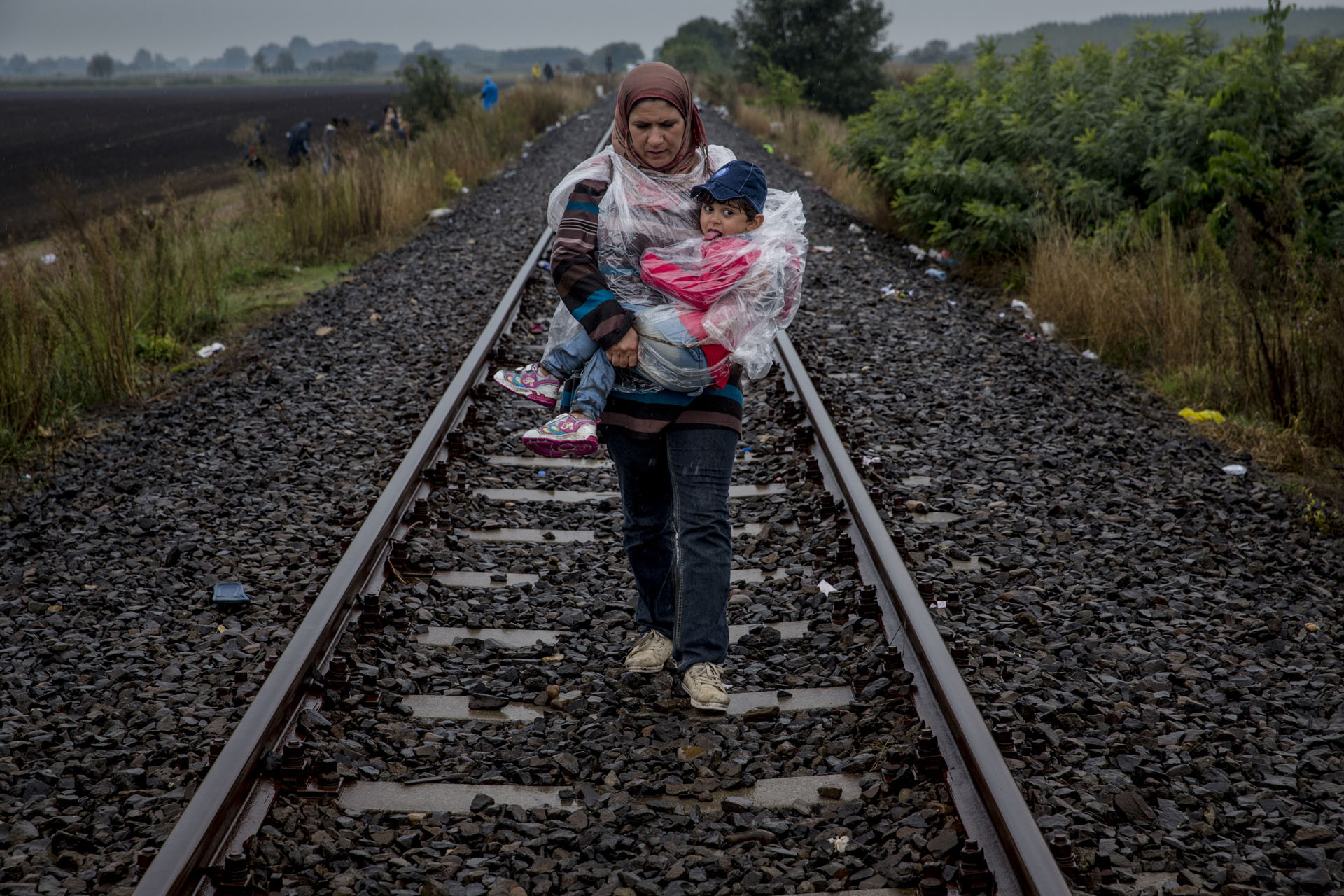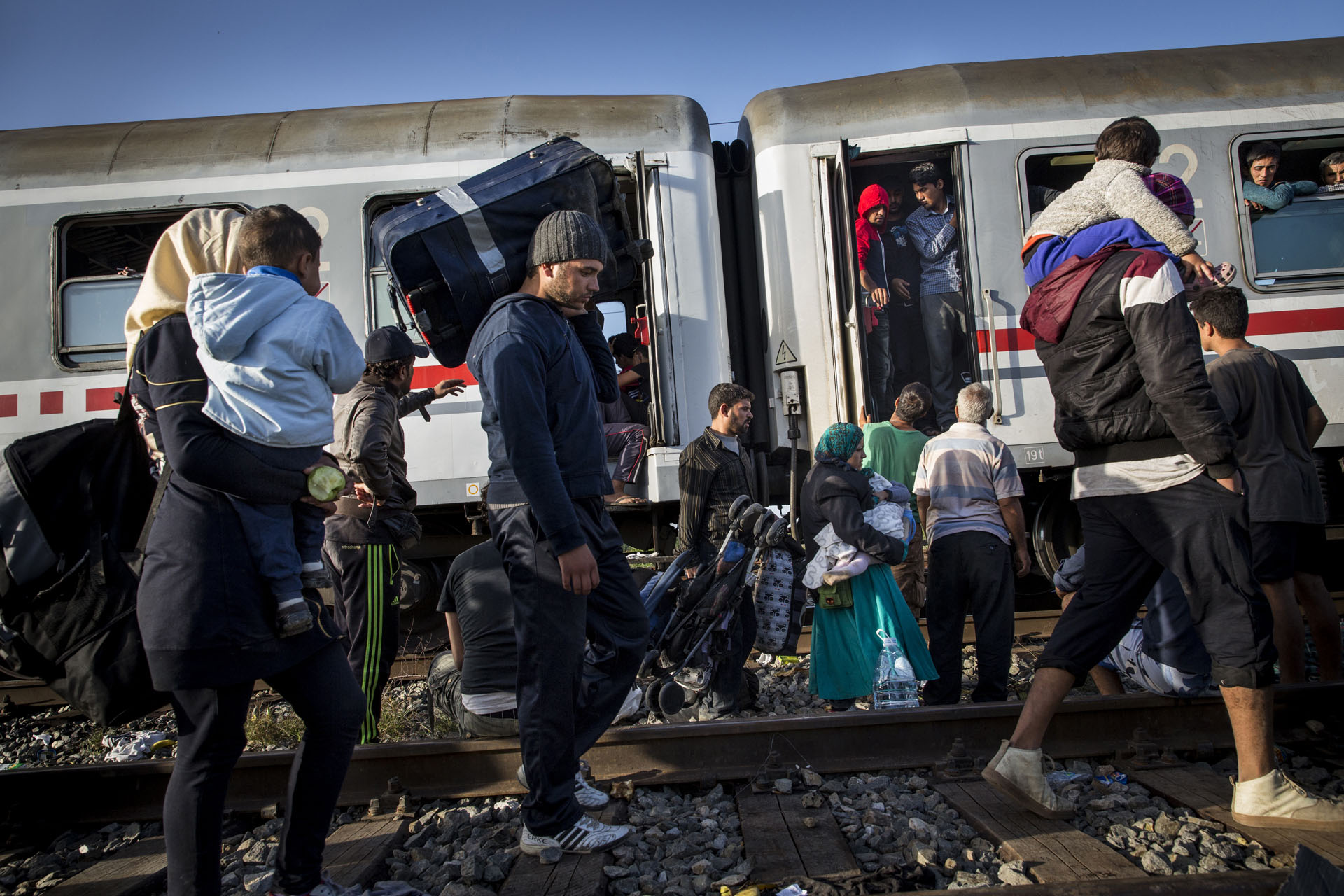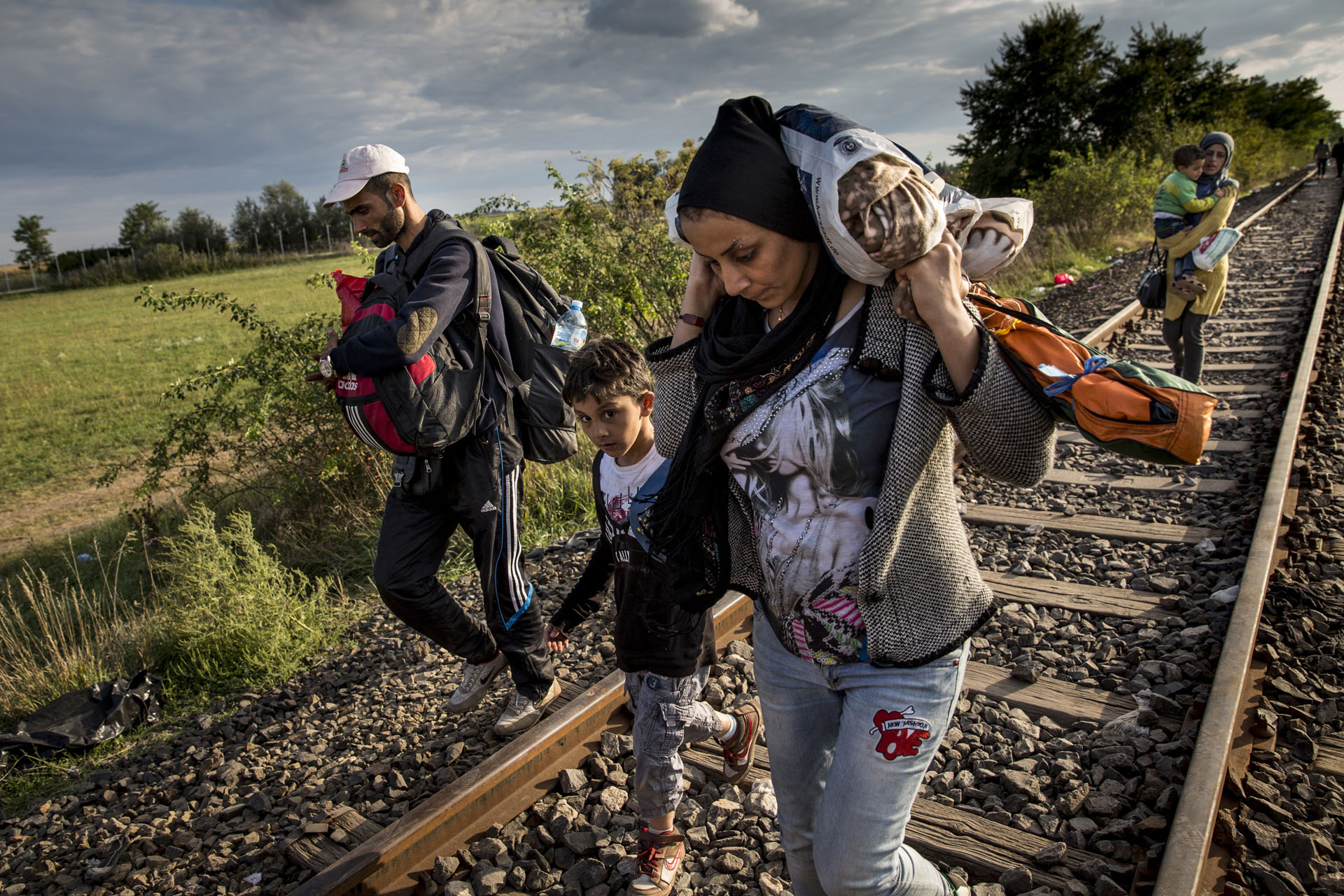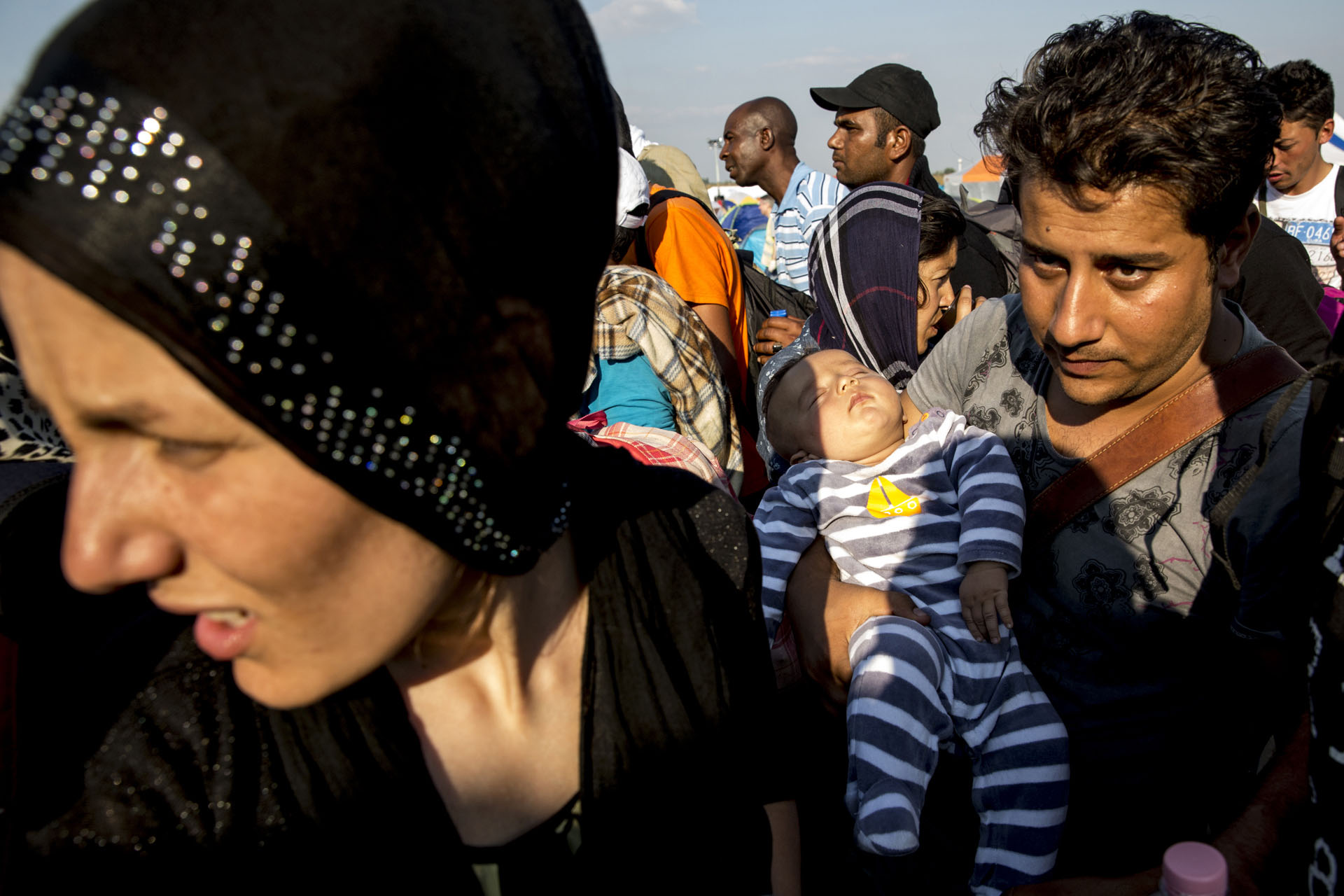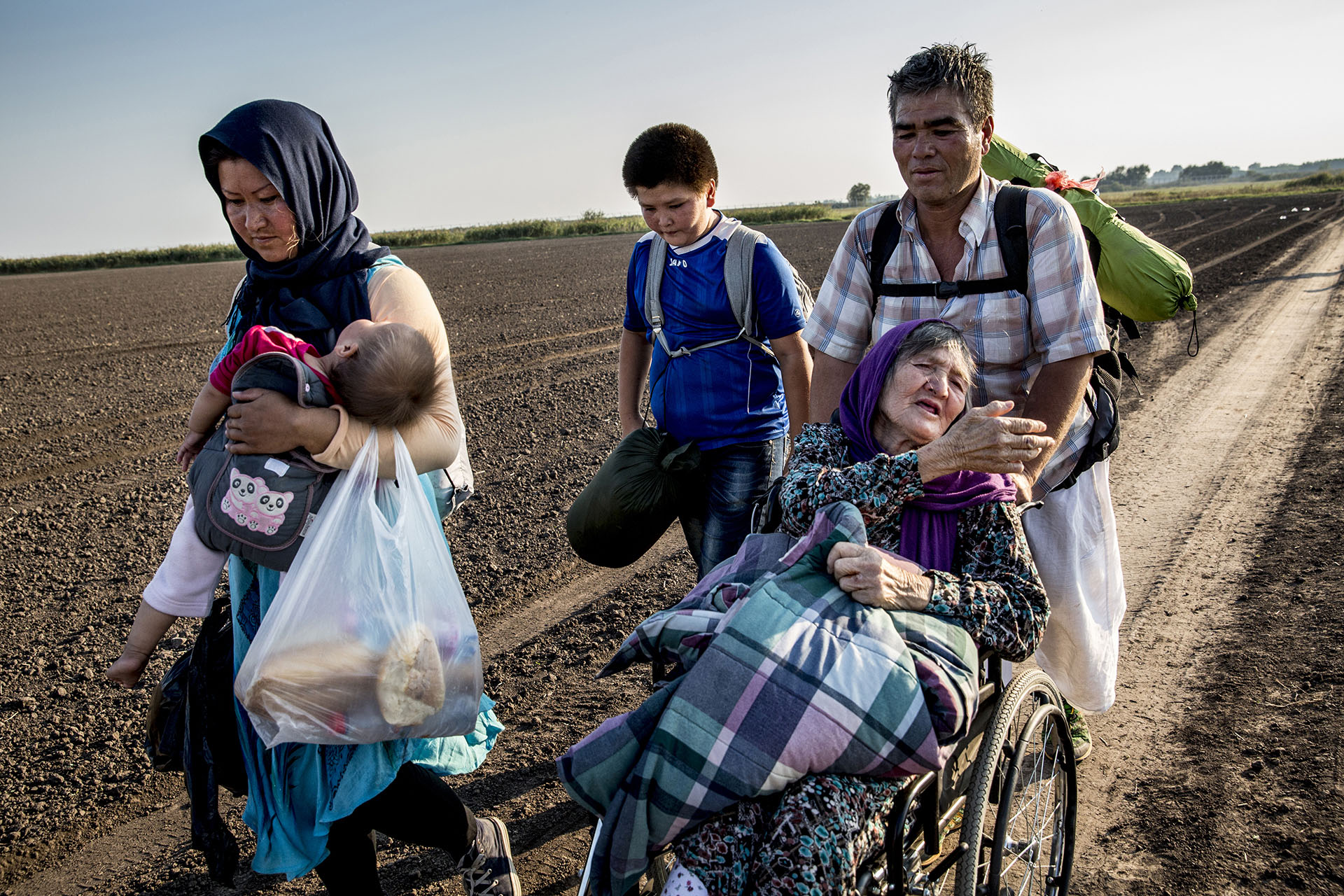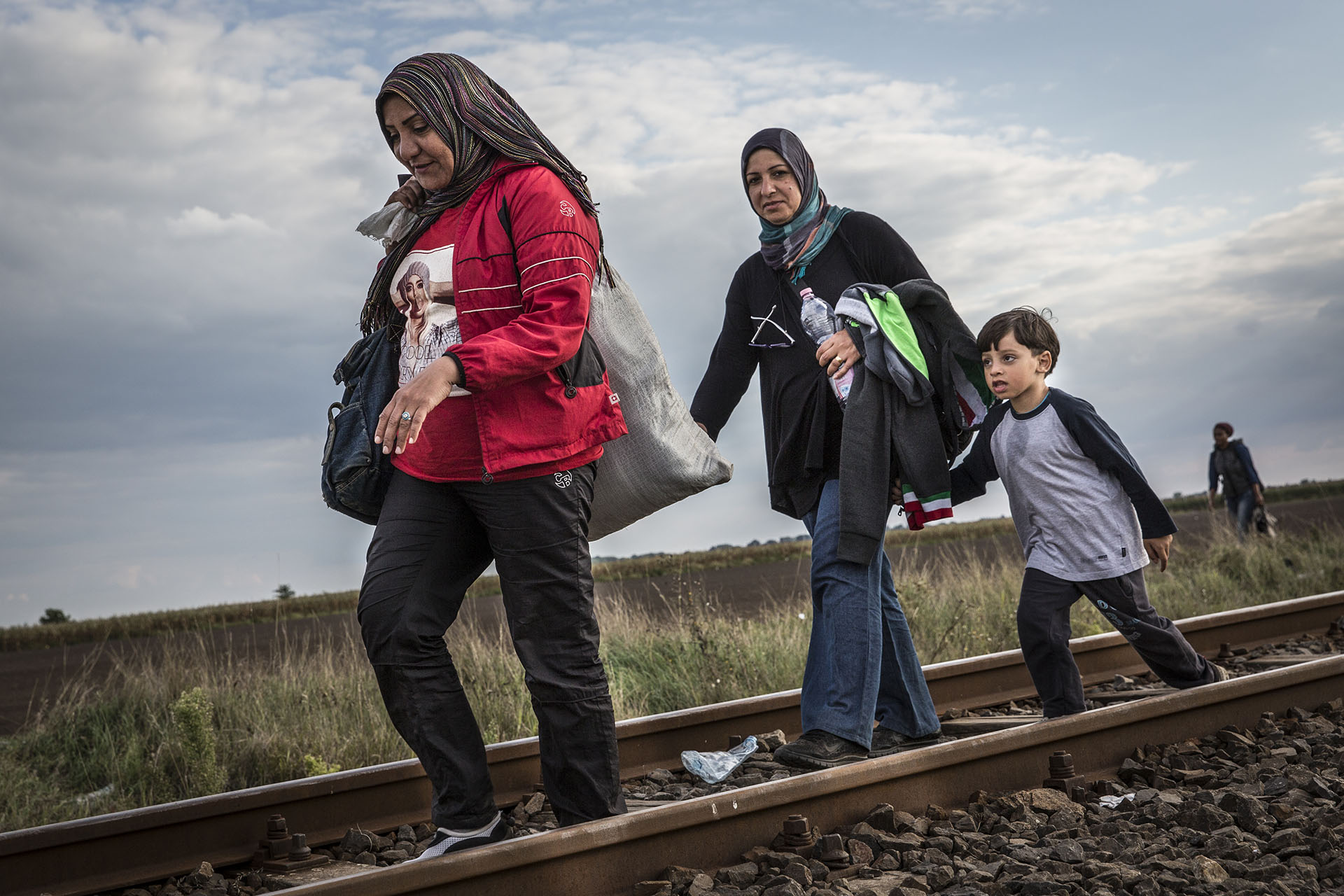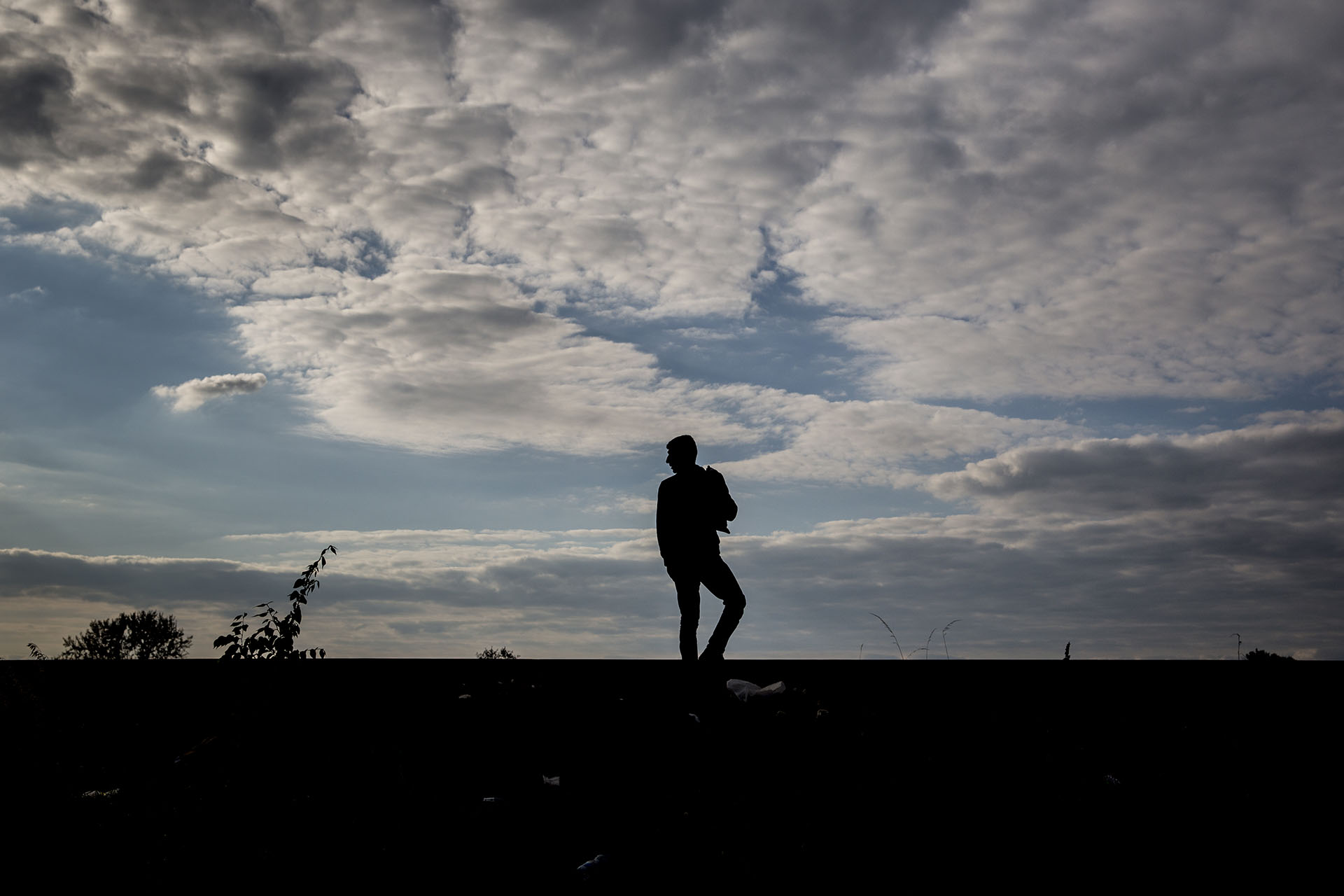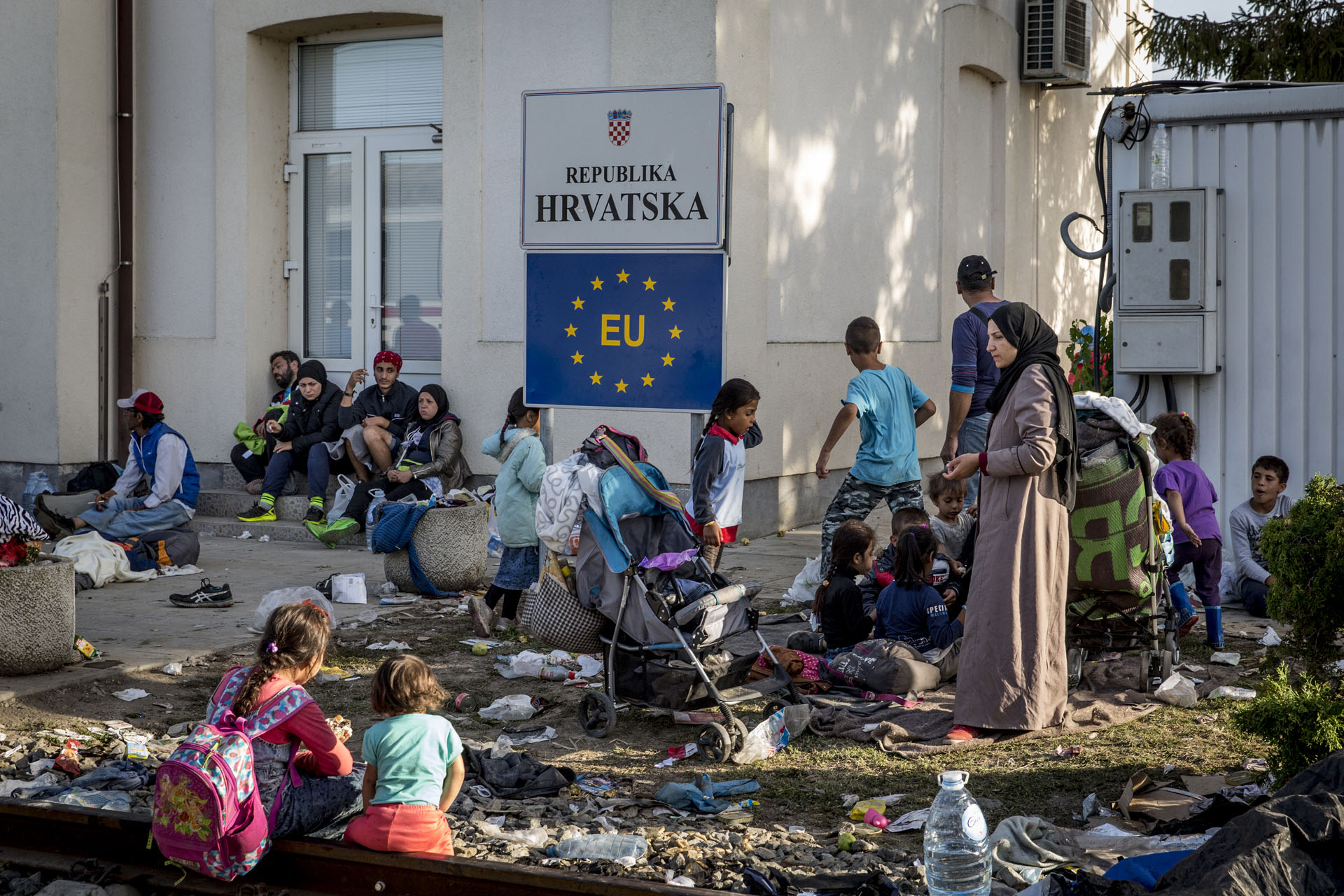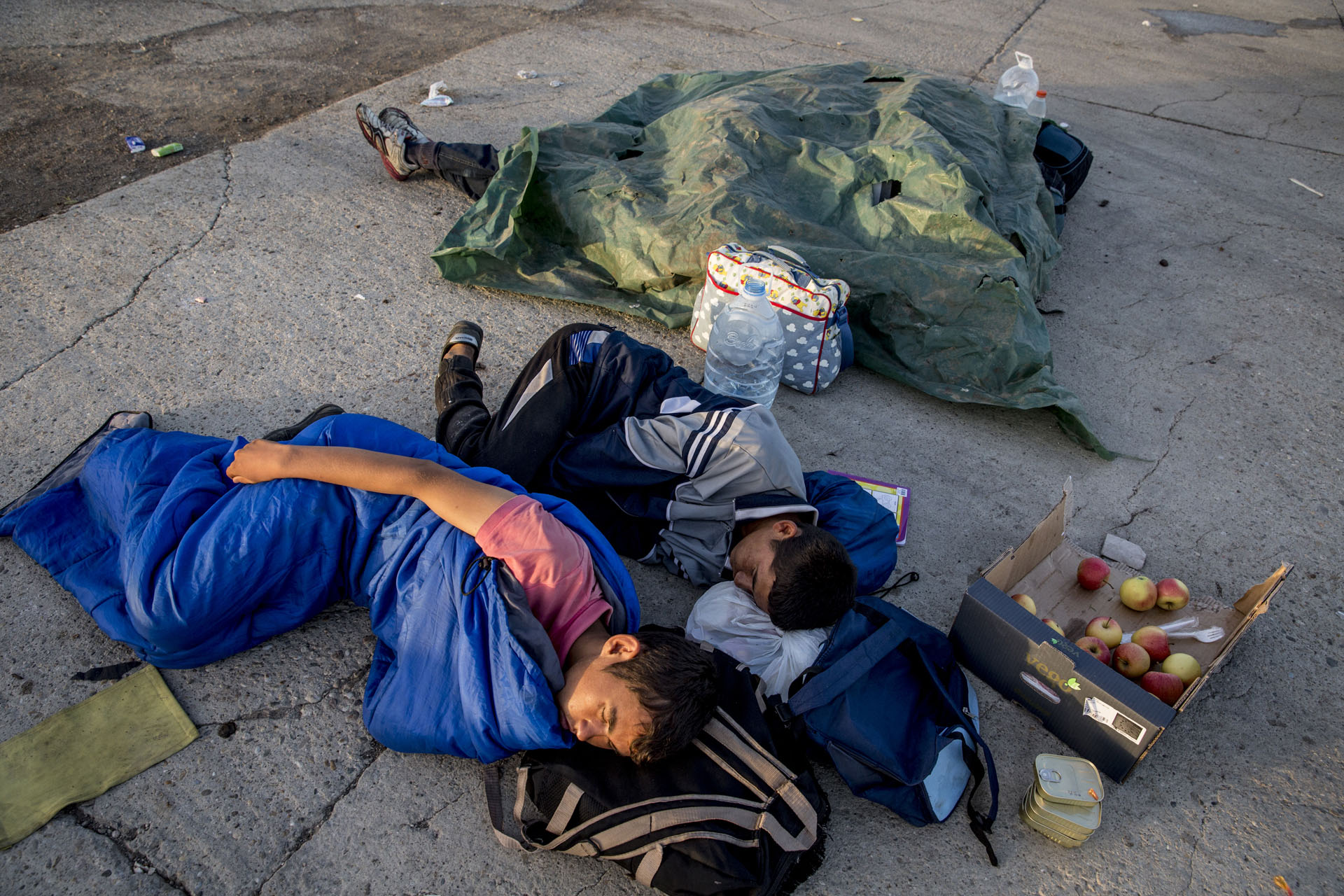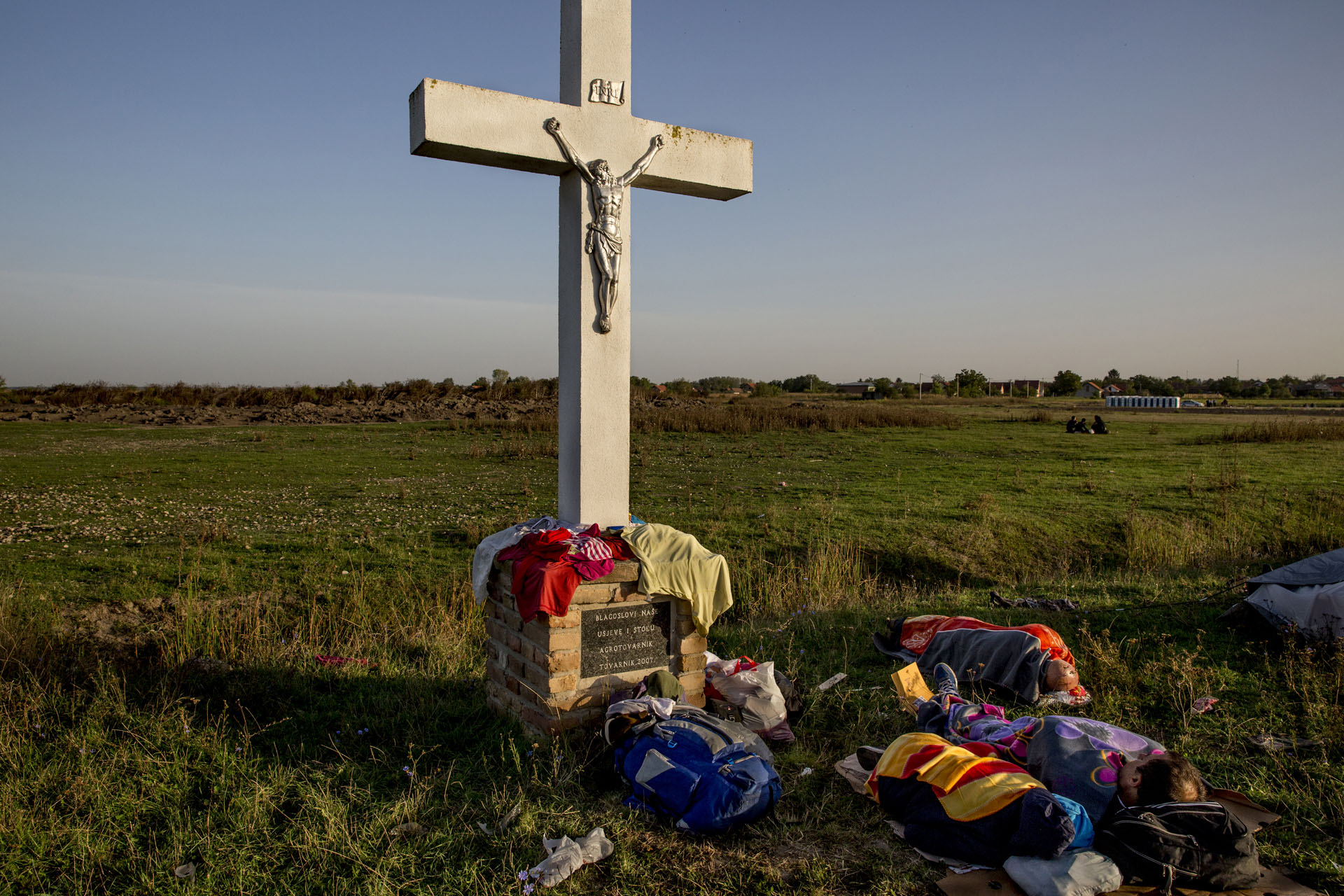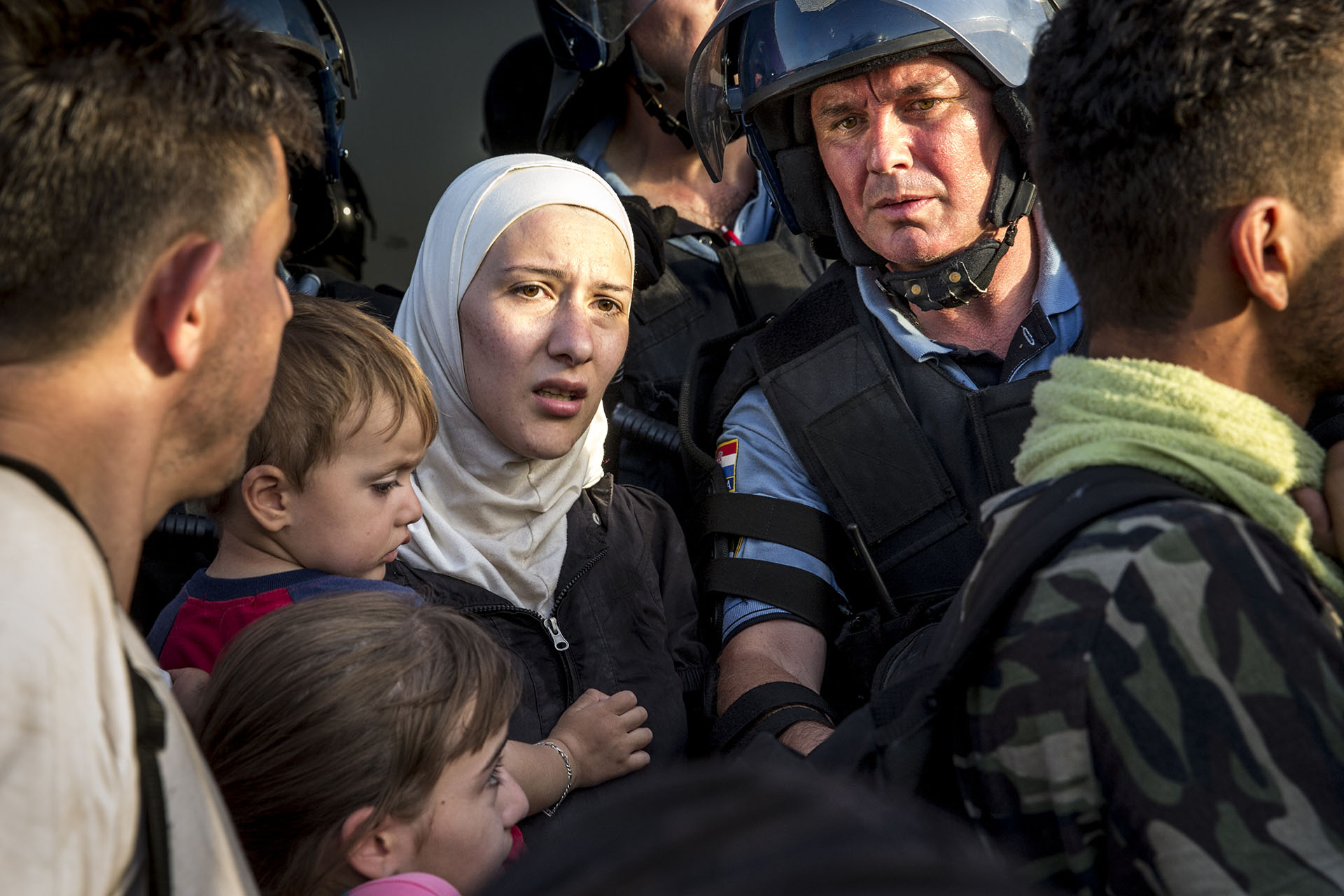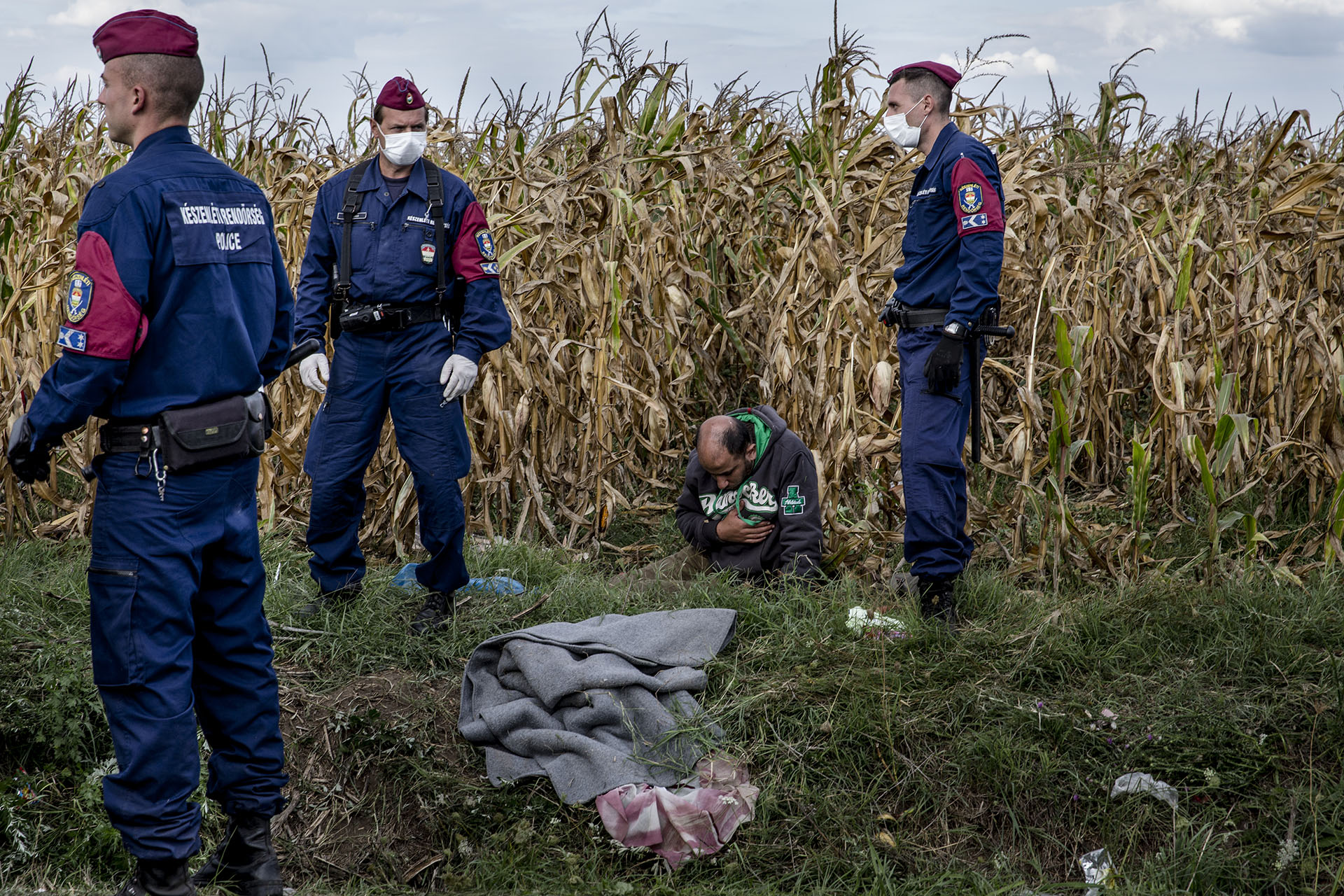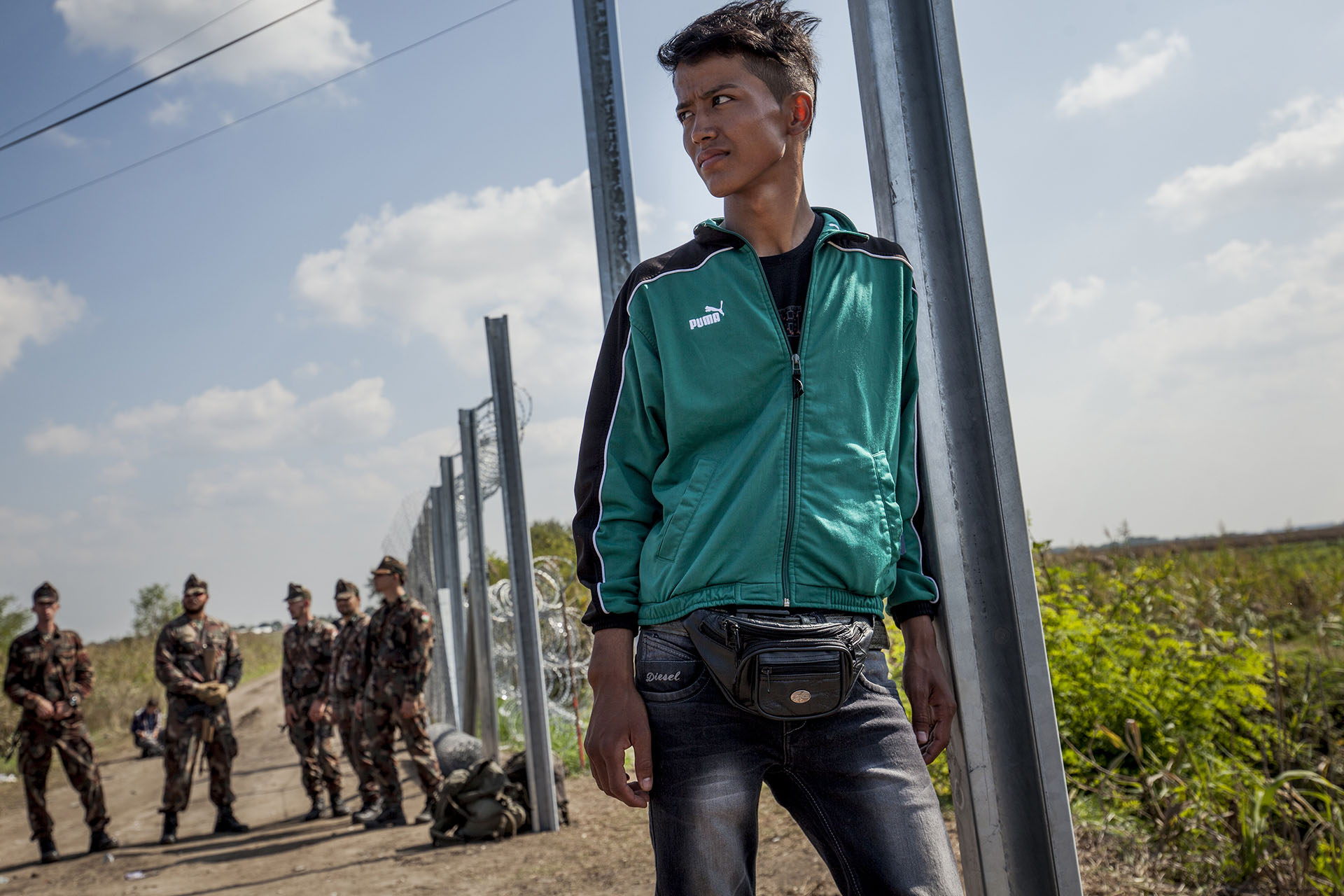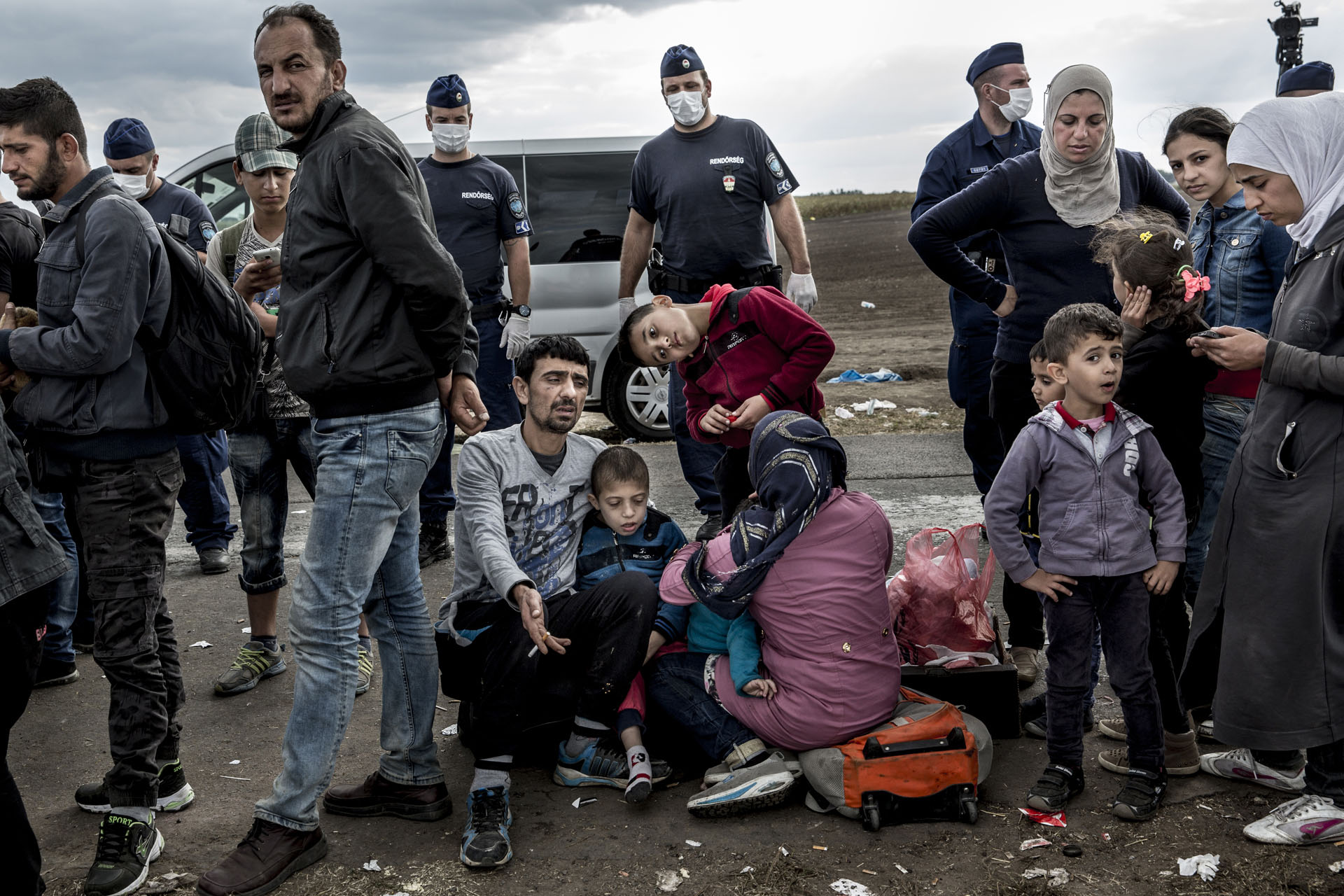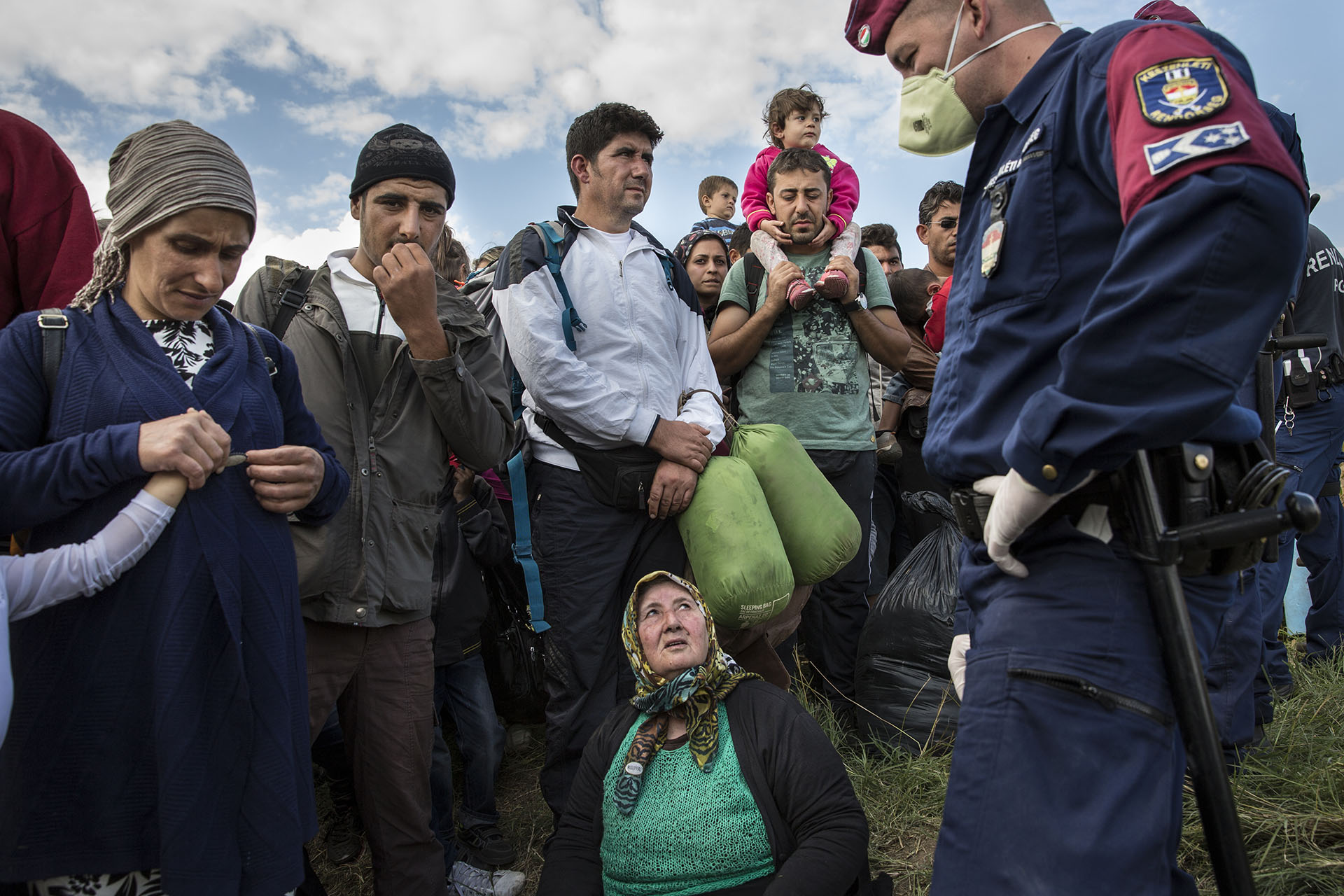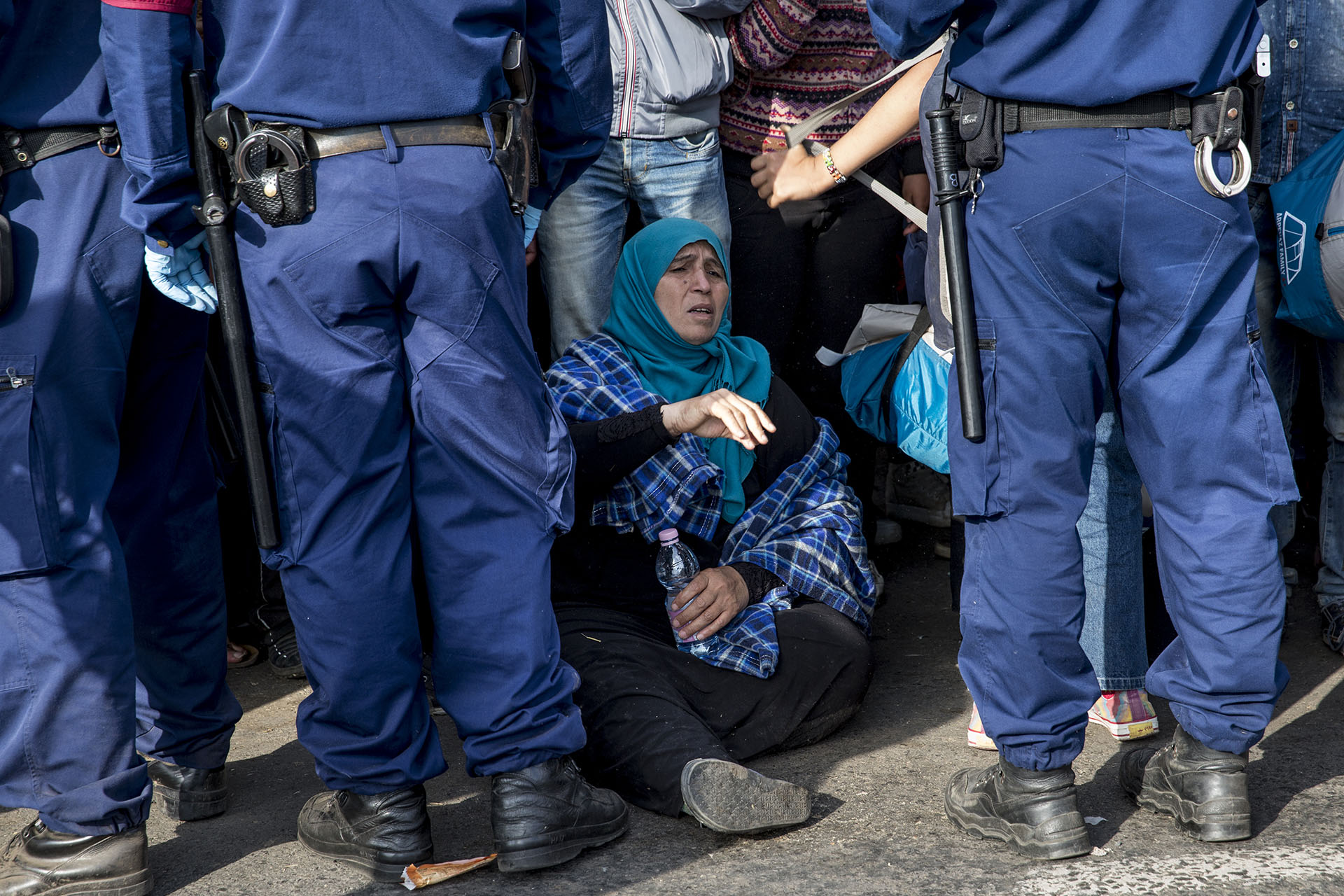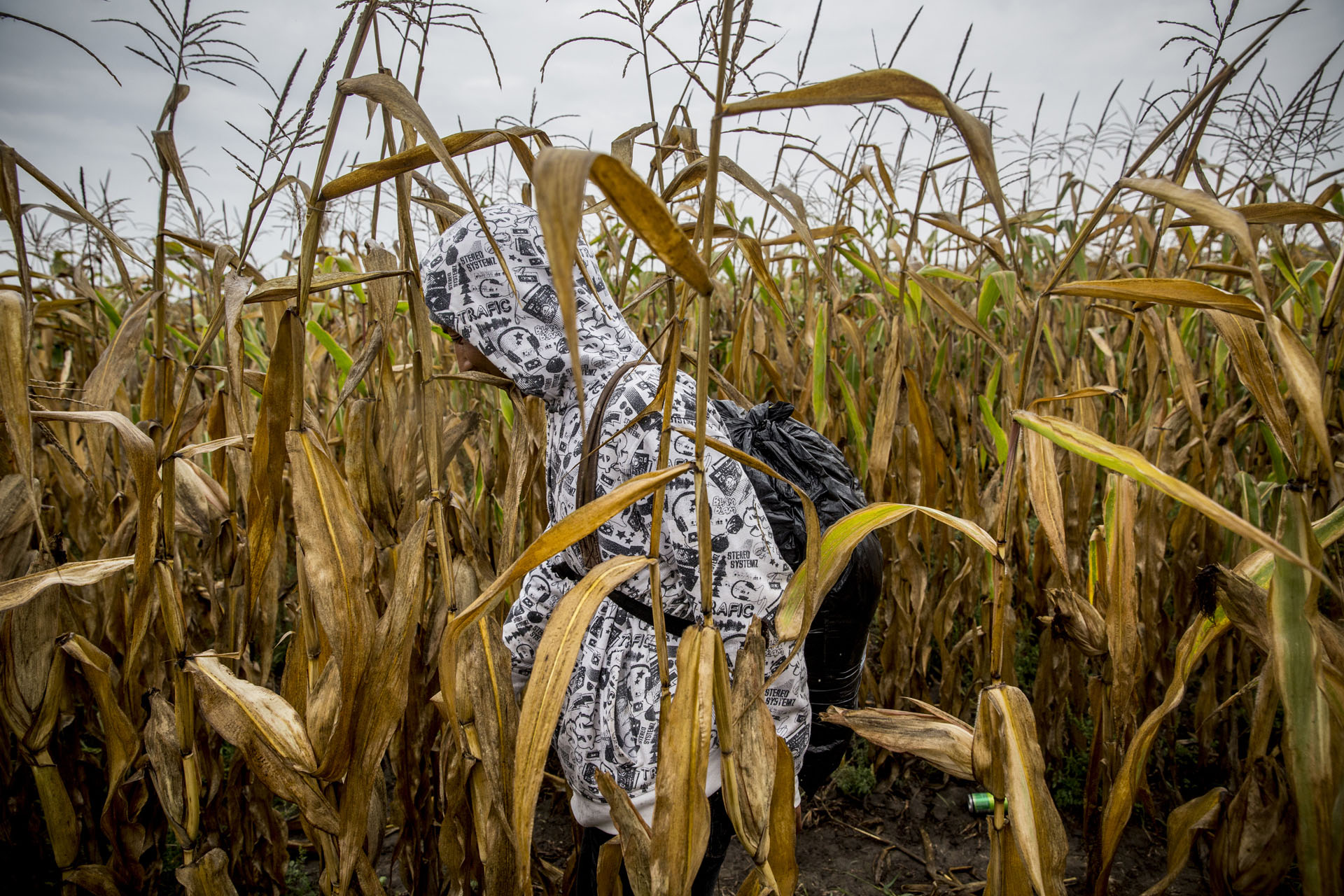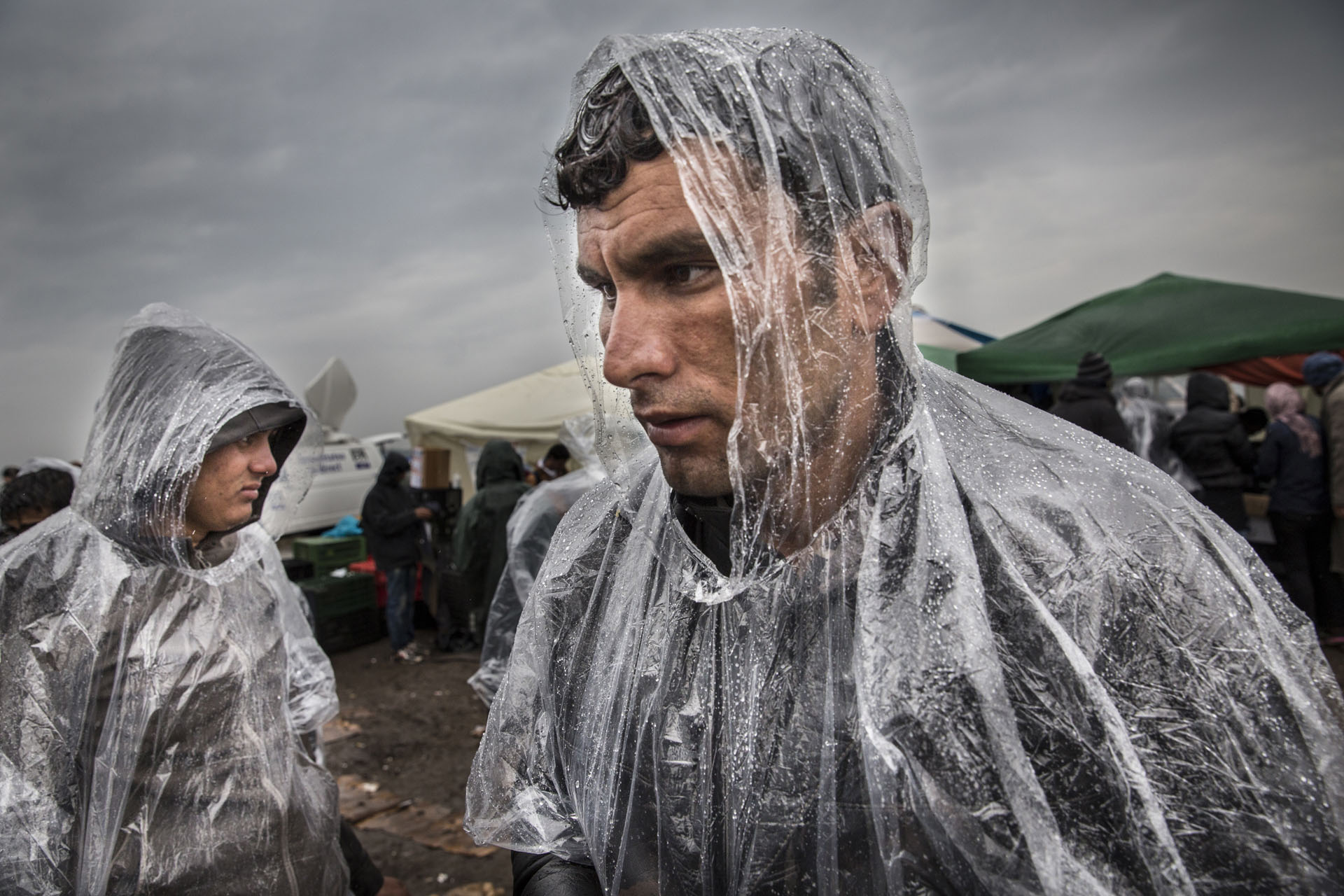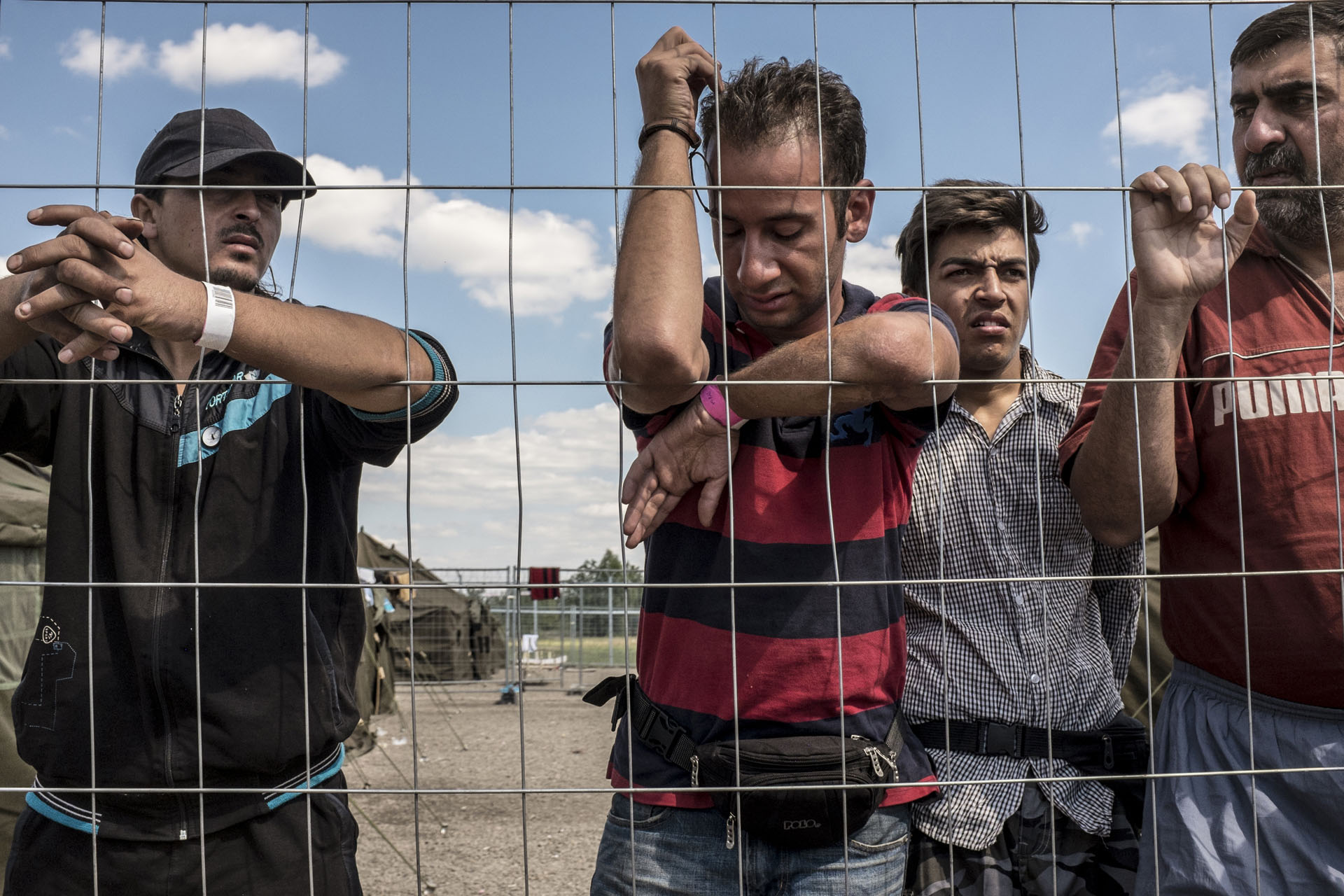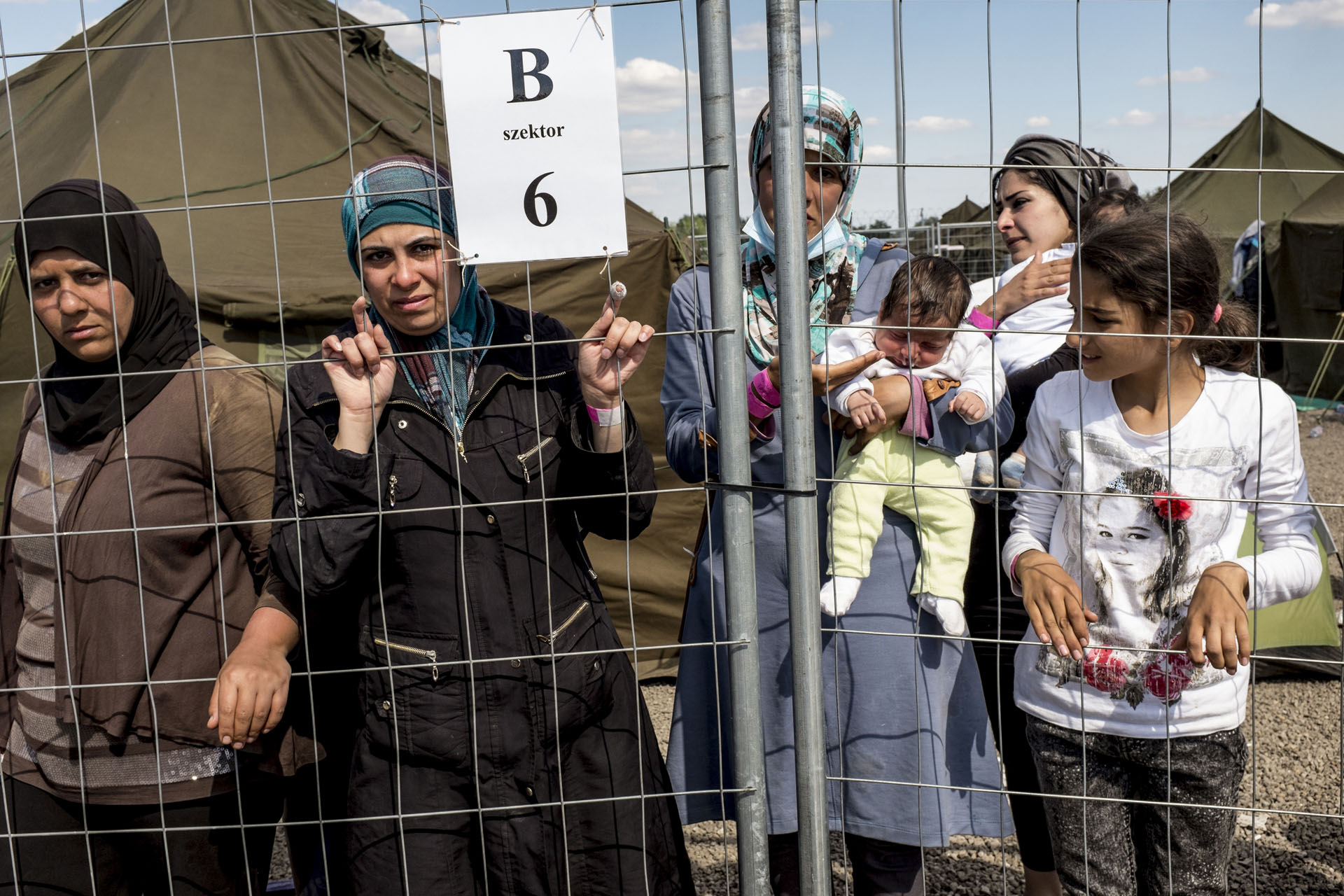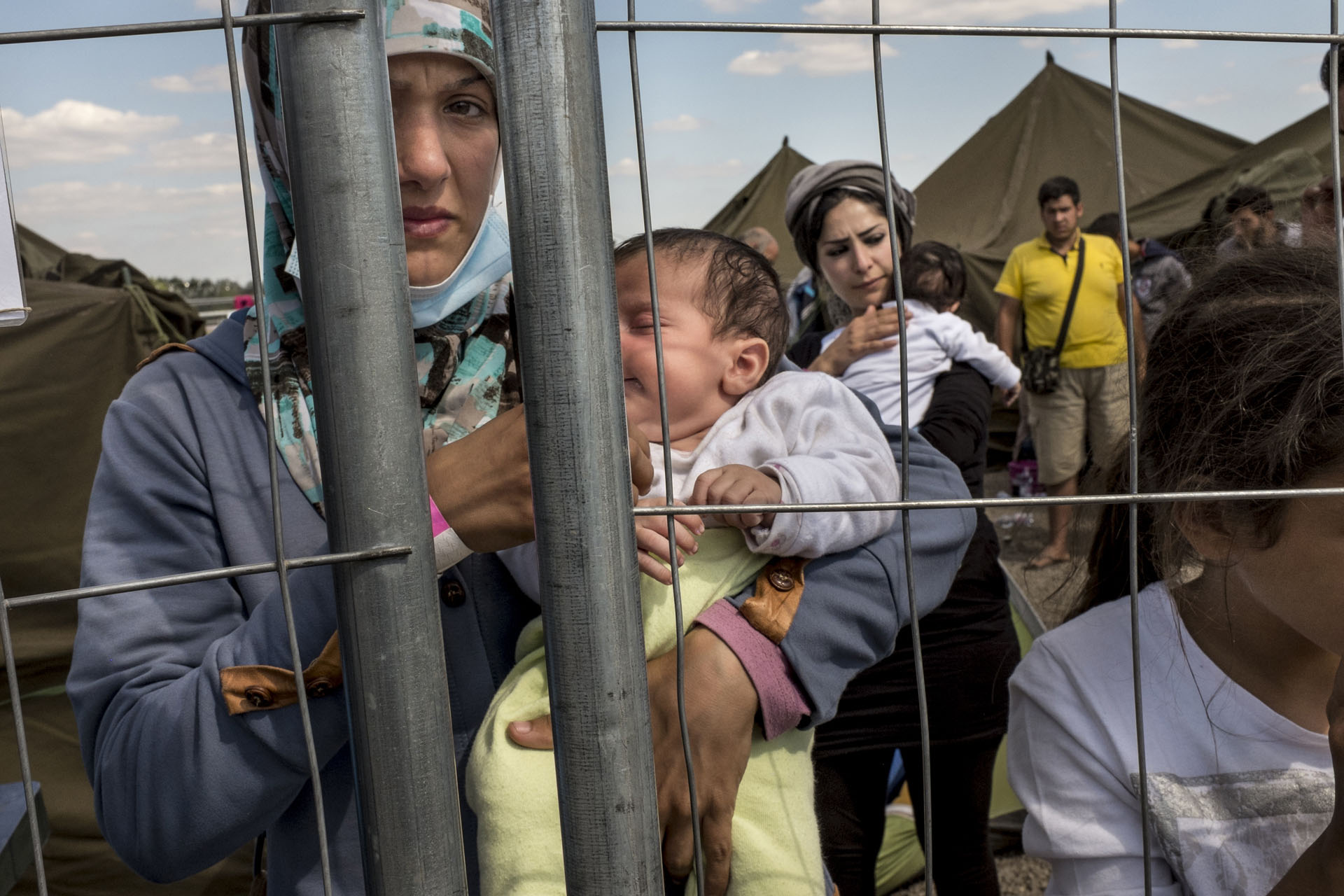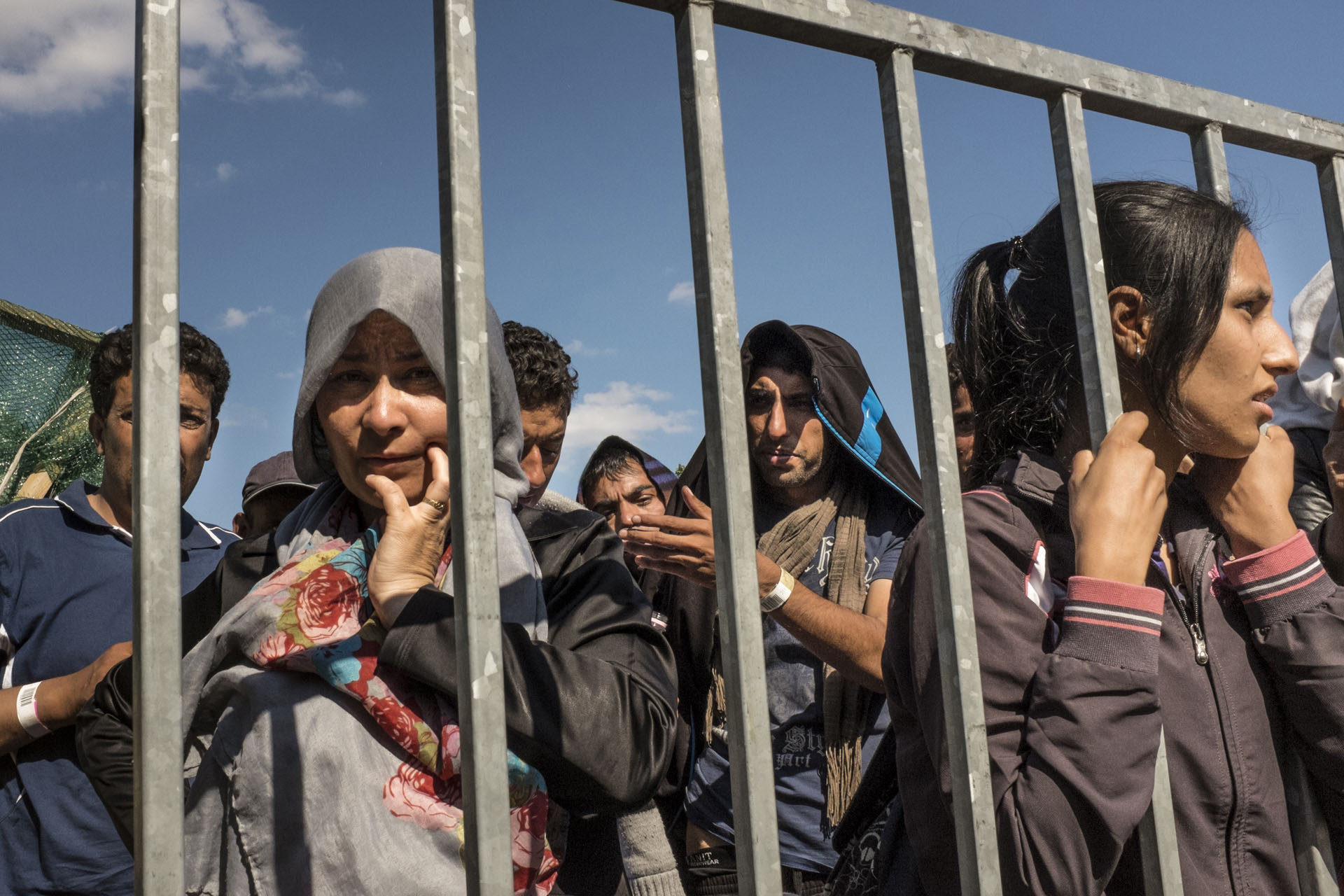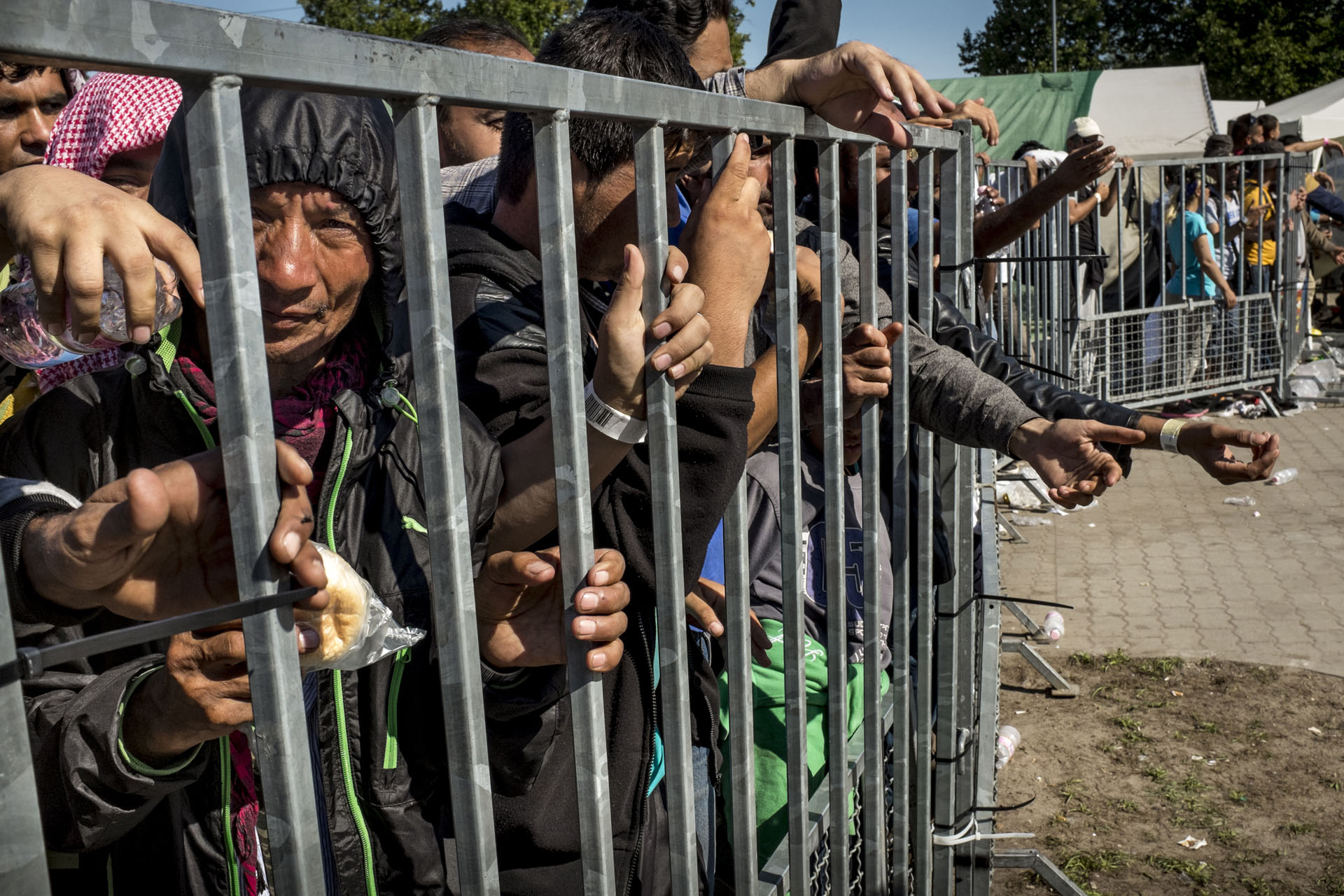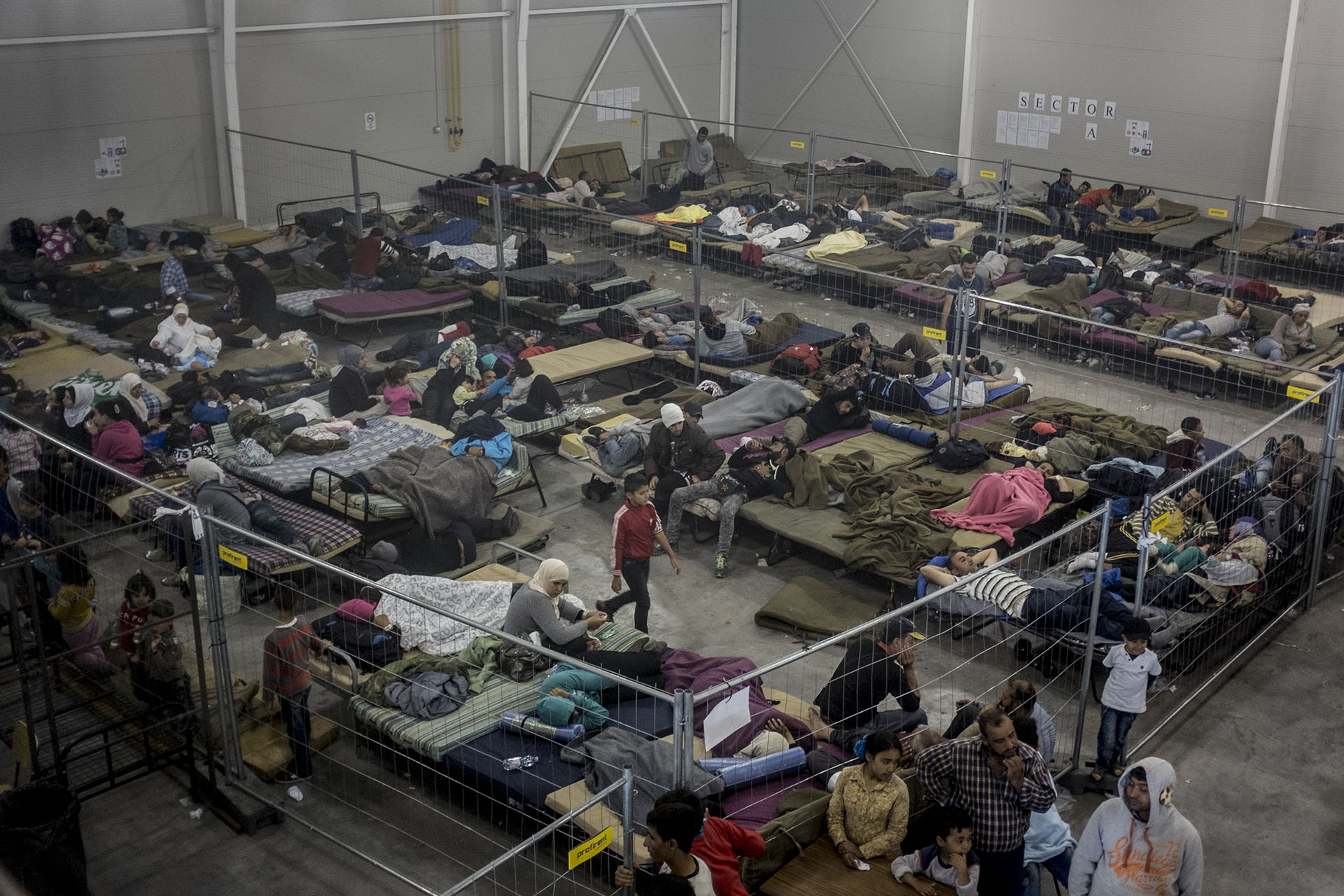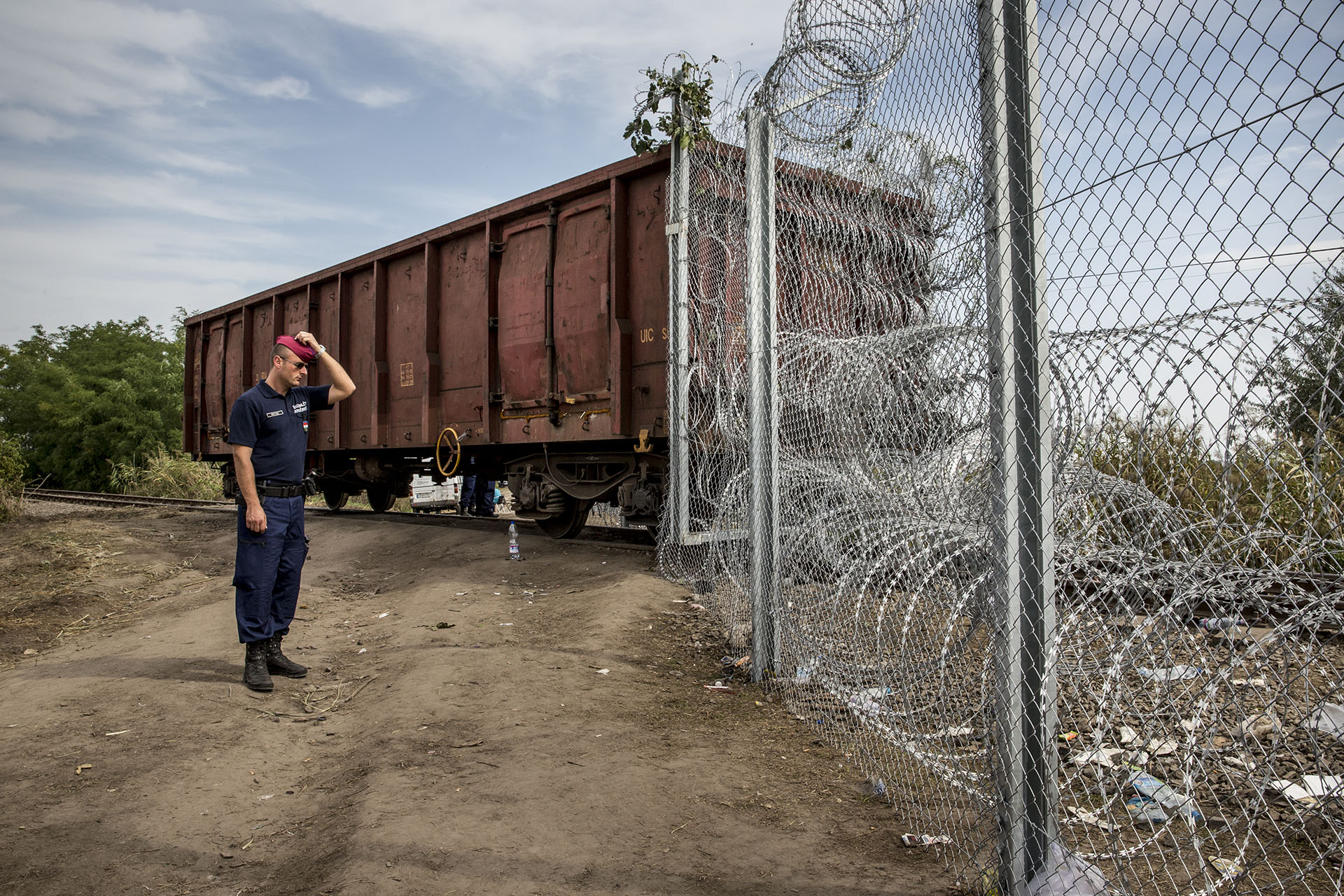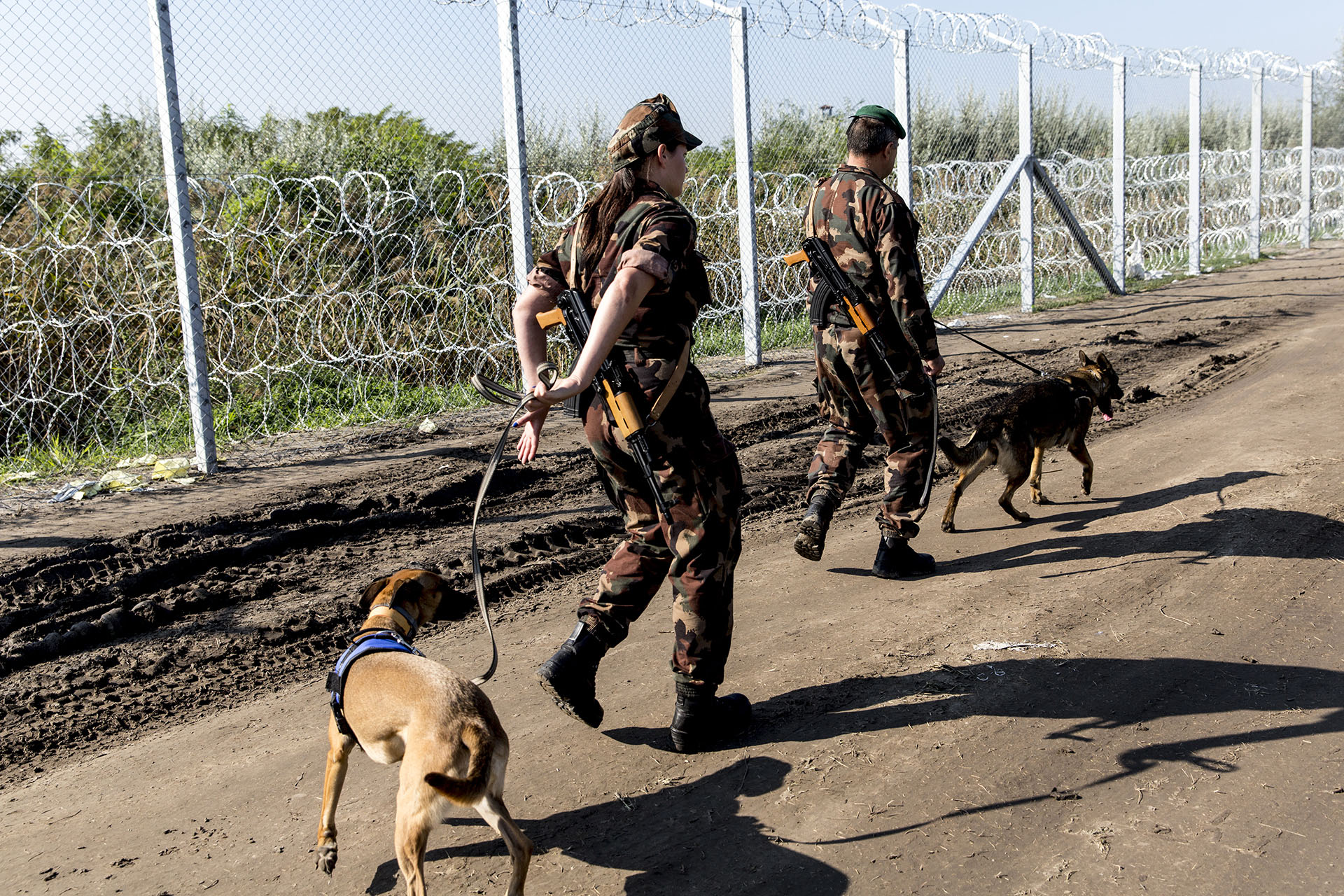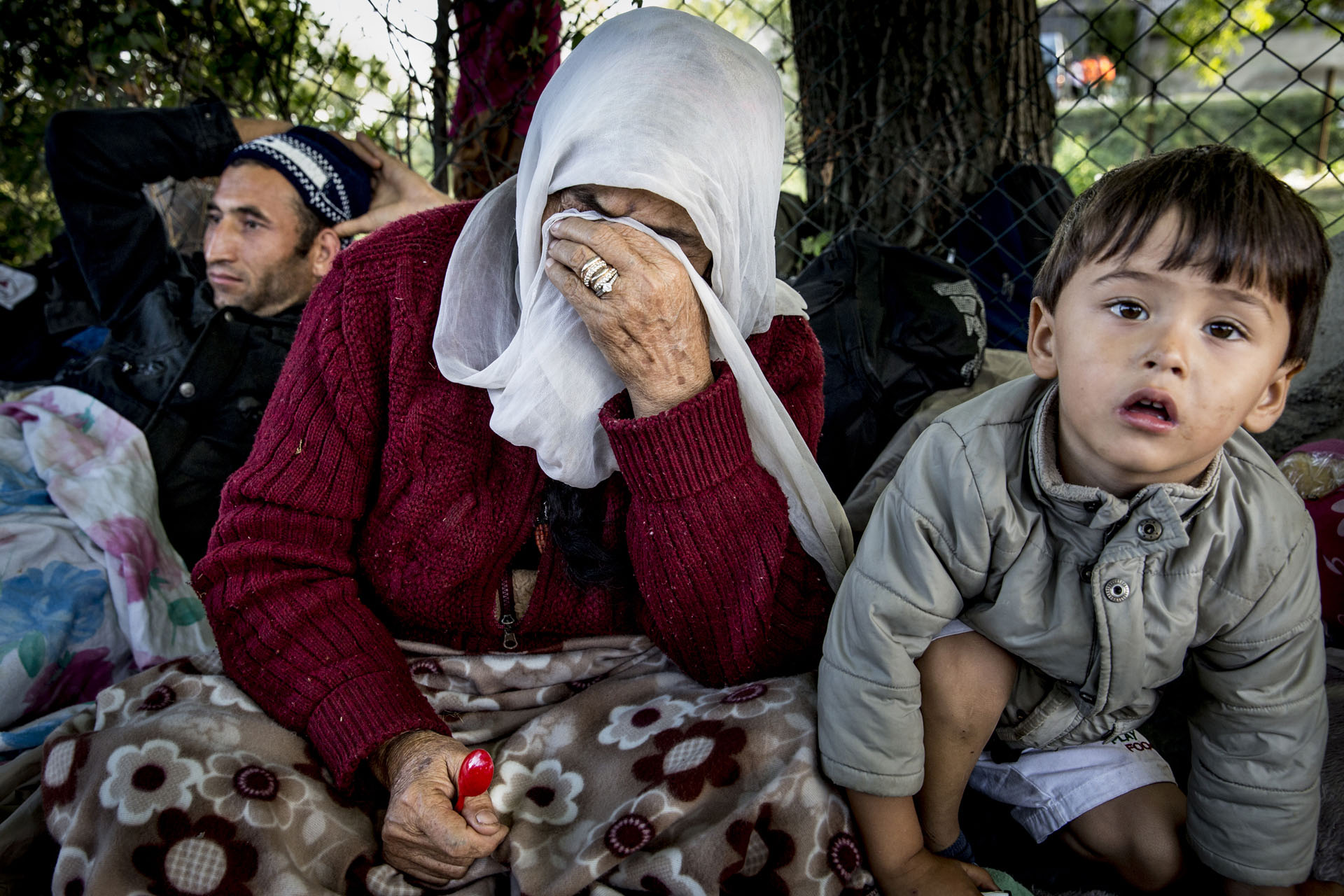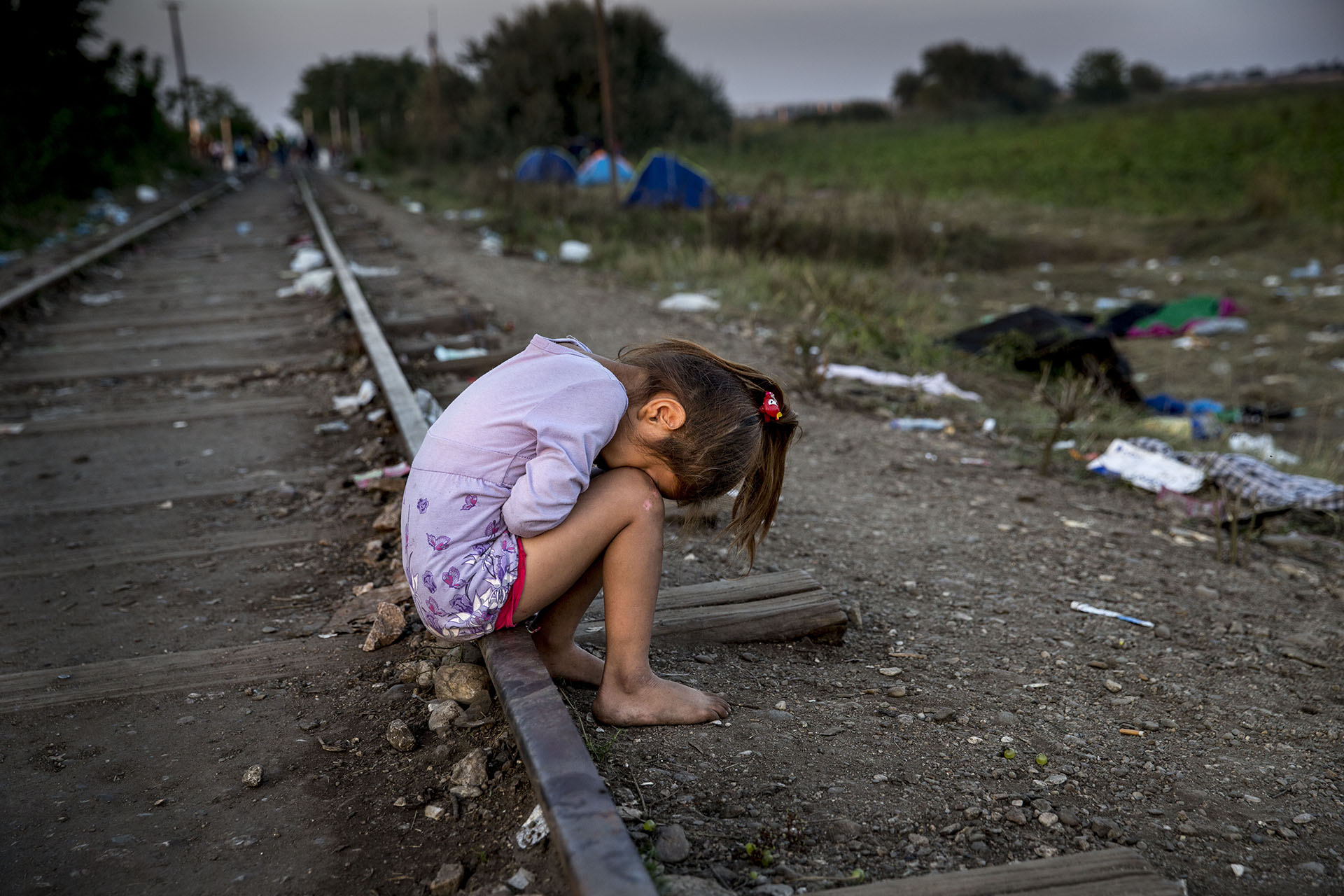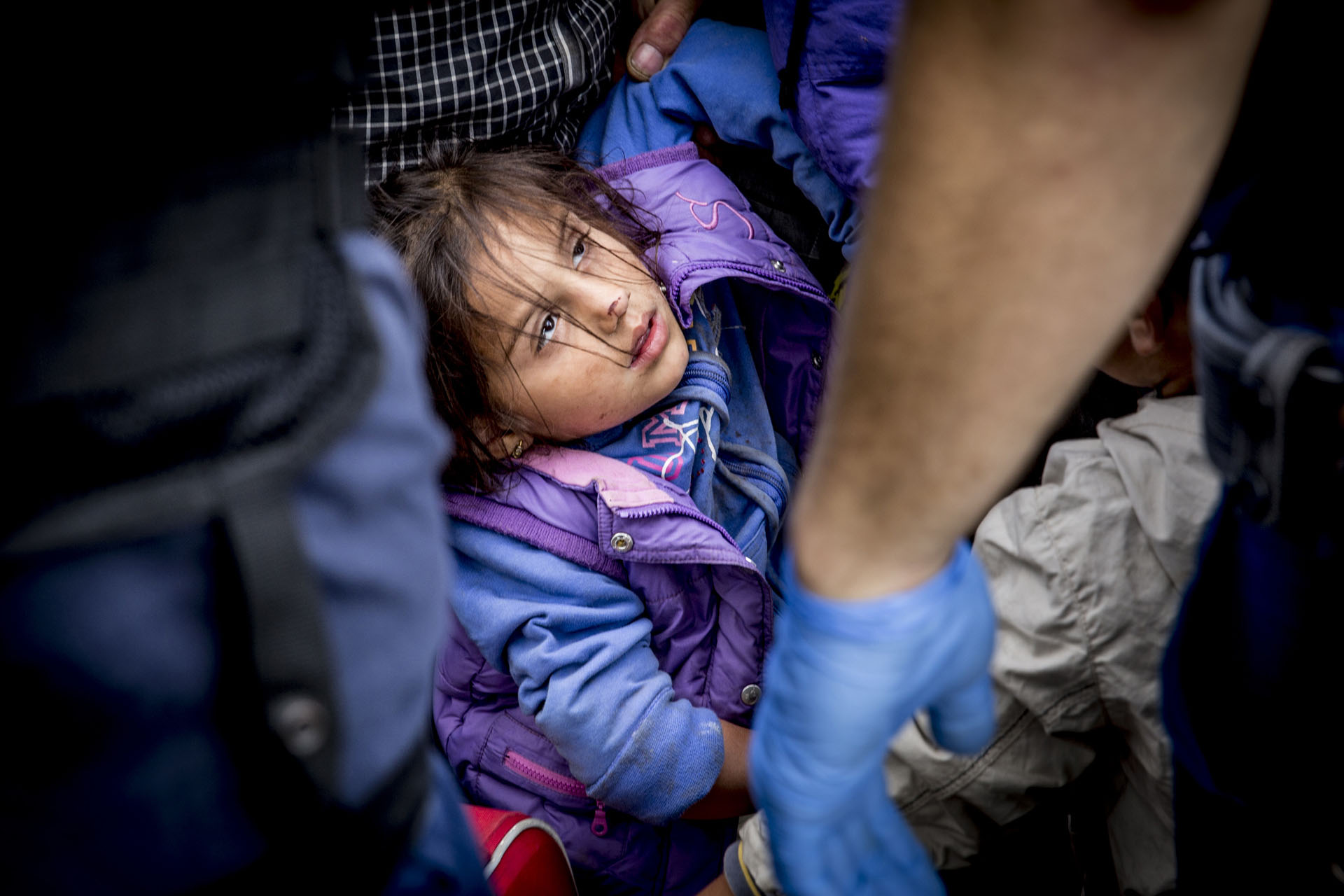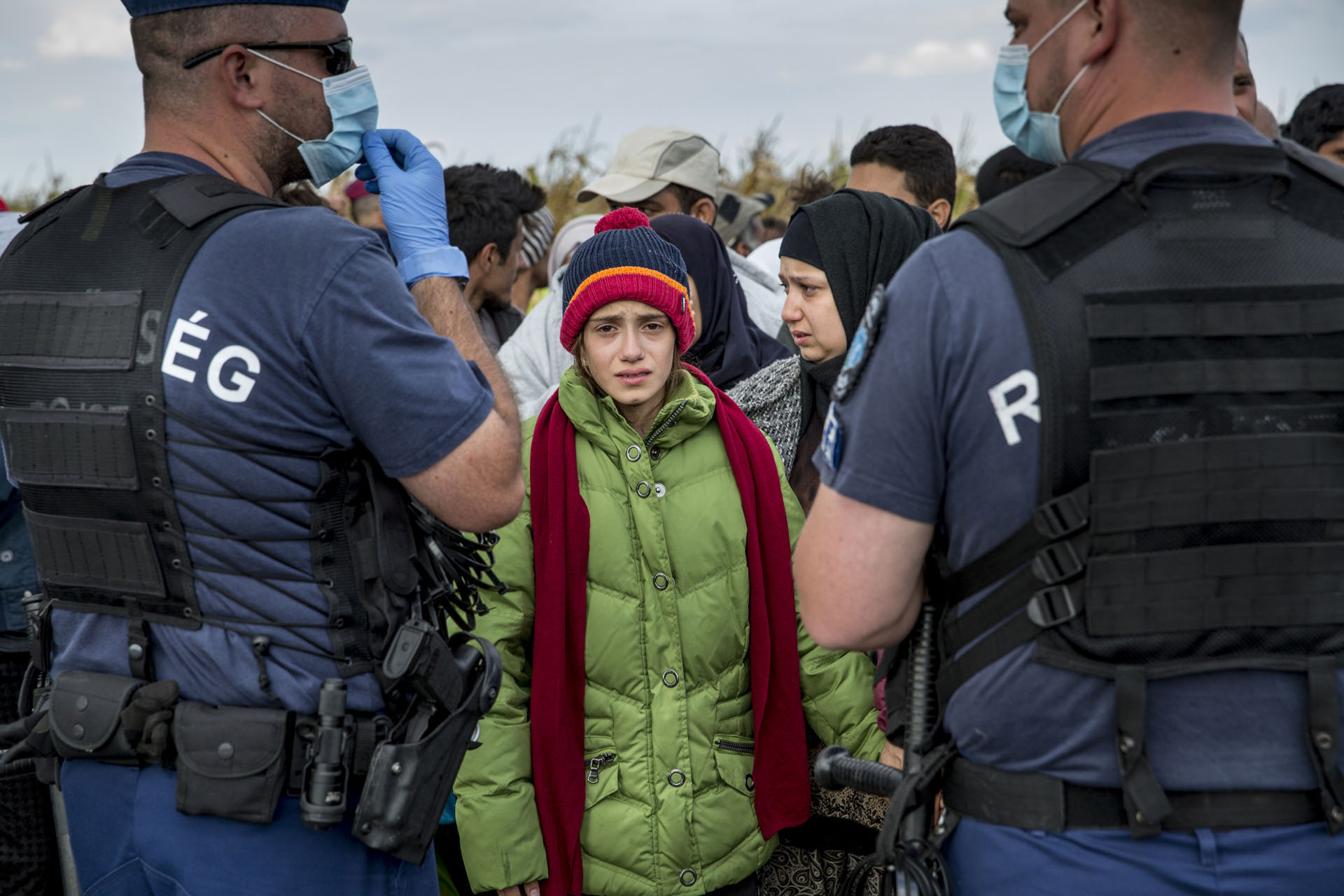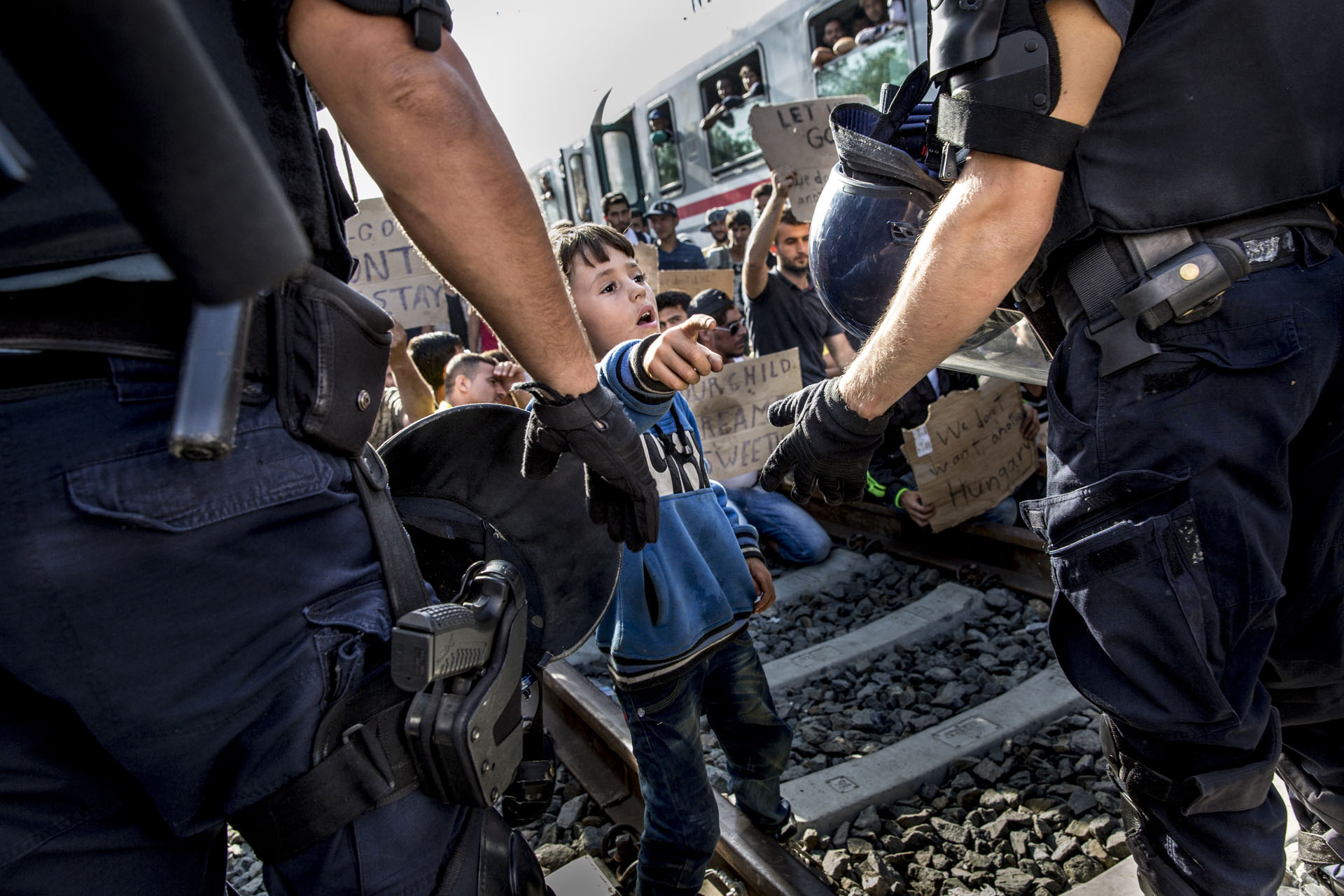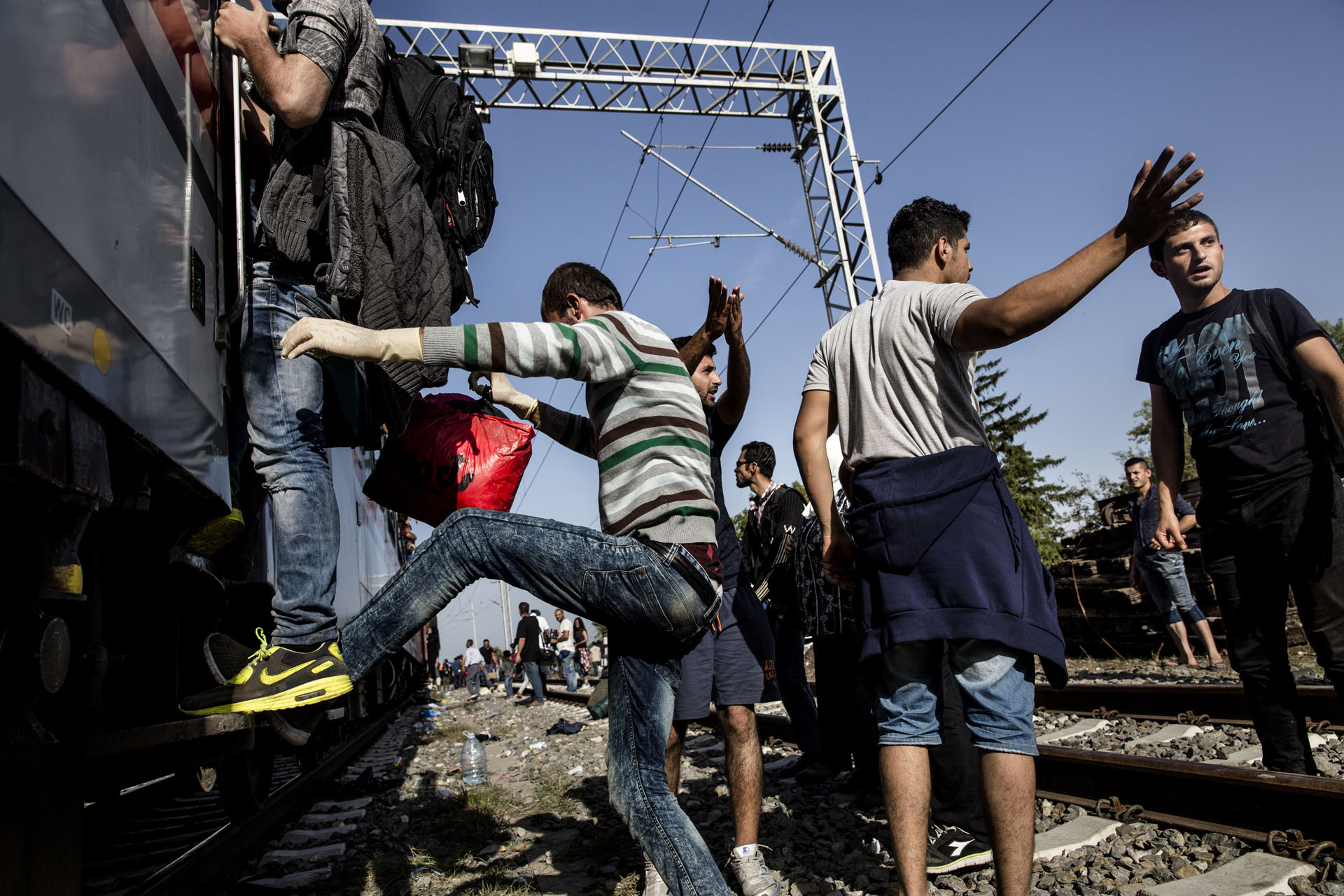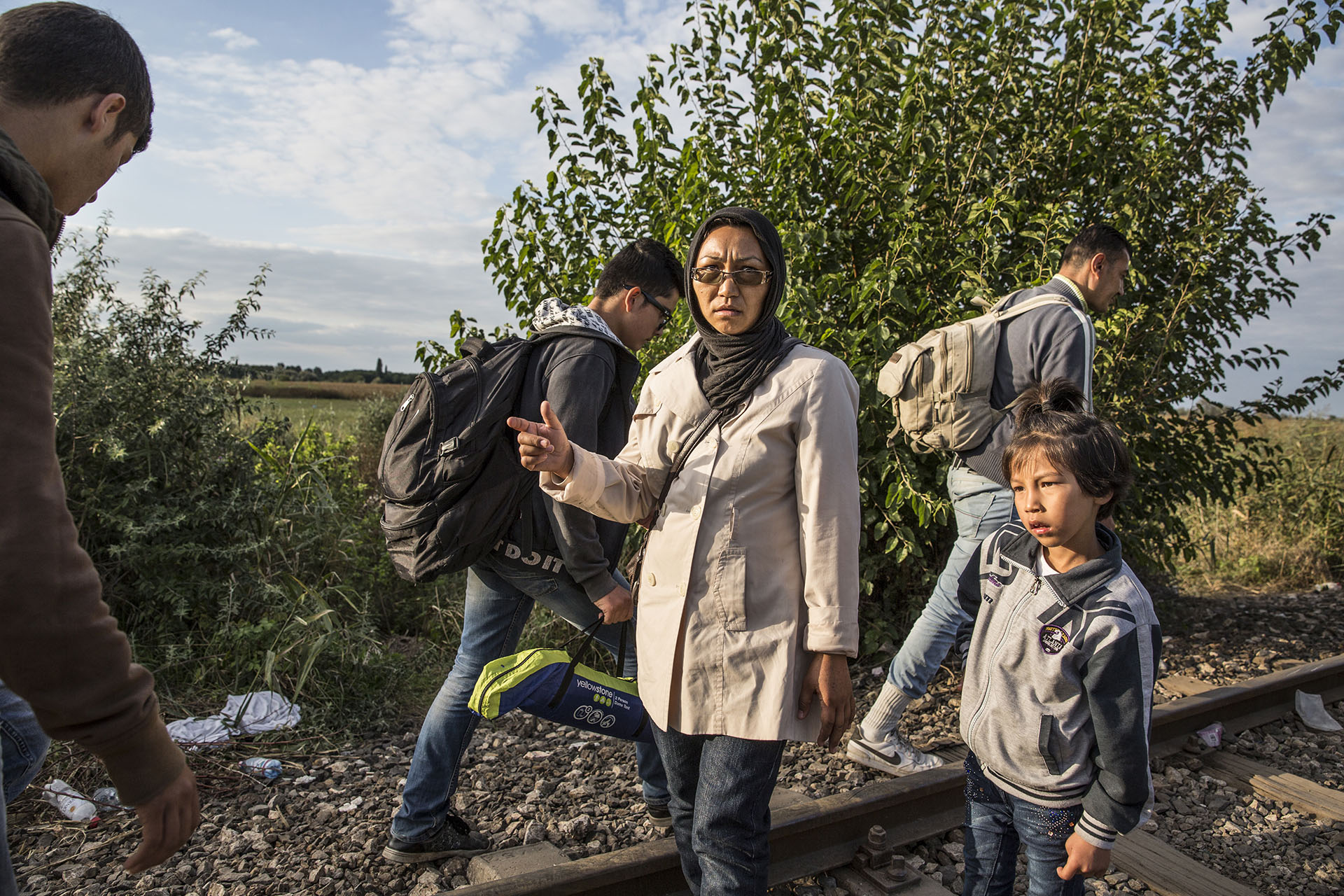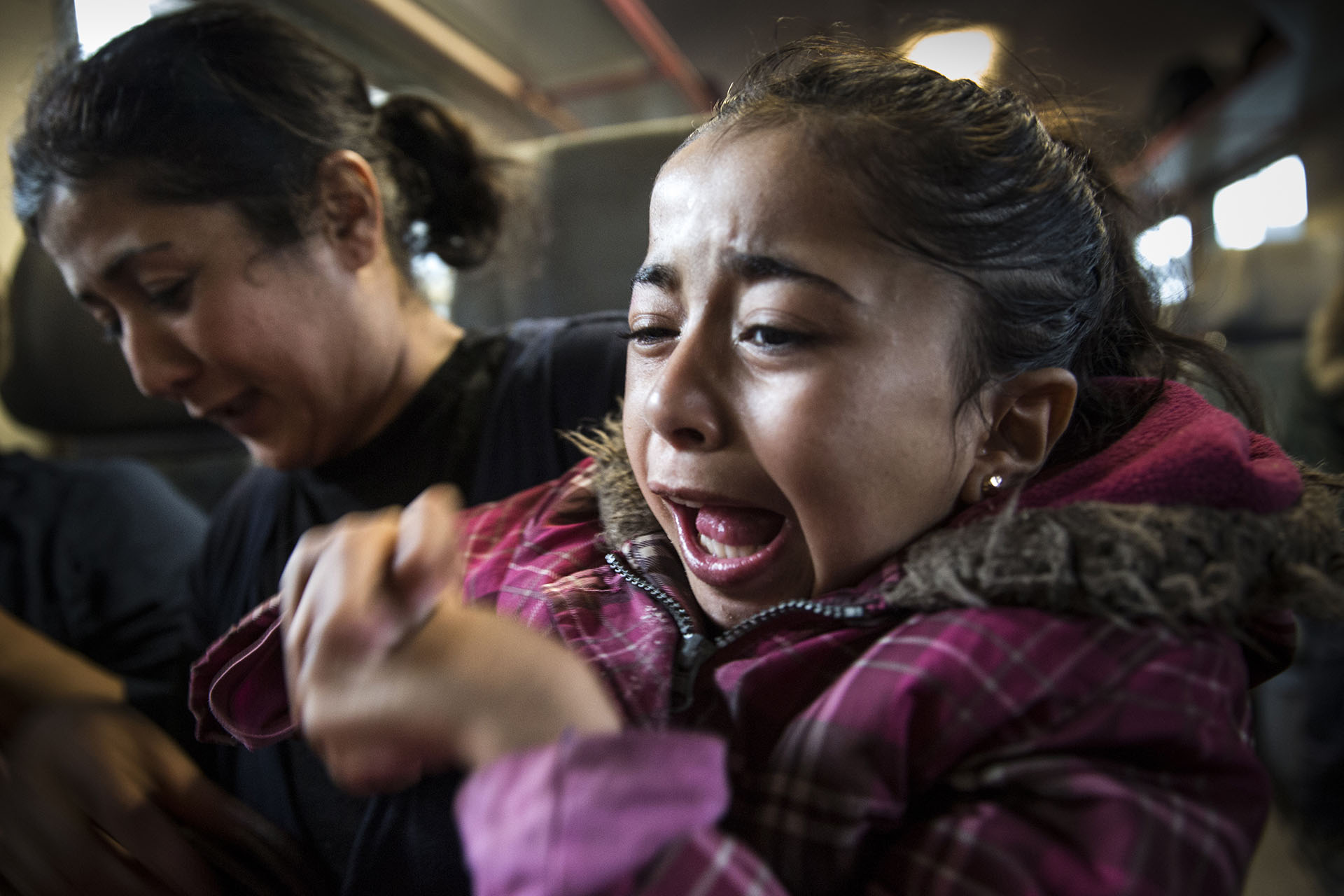the journey
For almost all of these taking the Balkan trail, the journey starts in Turkey. Reaching Turkey presents special challenges for those coming from Afghanistan, as they first have to cross the Iranian desert and the Iran-Turkey border, where Iranian border guards have regularly opened fire on them. Hussein, the Afghan farmer who carried his elderly mother on his back, told me that when he crossed the Iran-Turkey border at night in a van stuffed with 27 people, the Iranian border guards sprayed the van with automatic fire, wounding 8 people inside the van with bullets.
Amir Faim, a 23-year-old farmer from Afghanistan’s Parwan province, and his wife, Navida, 18 — their three-month-old baby son, Parwan, in his father’s arms — stood in the long line at the Röszke collection point on the Hungarian side of its border with Serbia, hoping to board a bus to take them to the dismal detention camps. Like most I spoke to, they hoped to go on to Austria and Germany.
Faim’s family had already waited all morning, then tried to walk to Budapest, 110 miles away, after watching in frustration while Syrian asylum seekers were allowed to board buses. They were told to wait in the hot sun. After they walked 6 miles, the Hungarian border police and Dutch officers assigned to Frontex, the EU’s border agency, stopped the group and ordered them to return to the collection point and wait again for the buses.
Faim told me that his family had sold everything they owned — their land, car, home, and jewelry — to collect the $16,000 smugglers demanded to take them out of Afghanistan. They had lived with instability for years, but the approaching threat of Afghan insurgents who have declared allegiance to the Islamic State finally made them decide to seek safety and security abroad.
Iranian border guards fired on them as they attempted to cross, forcing everyone to run away in panic. In the chaos, they lost their son, just two-months-old at the time, and it took them three hours of frantic searching to find him again, picked up by someone in their scattered group.
For many Afghans, the journey is even tougher. They flee Afghanistan with just bus fare to the Afghan-Iran border, and walk most of the way to Europe, unable to pay for smugglers or bus rides. Ismail, a 15- year-old boy from Logar province, told me he and his parents had walked for four weeks to cross Iran, and then had to cross the 15-foot-tall razor wire fence on the Bulgaria-Turkey border using ladders and blankets because they could not afford to pay the boat smugglers for the dangerous but short trip from Izmir to the Greek islands.
For those who can afford to pay the smugglers, the journey in Turkey begins with a visit to an “insurer” in Istanbul or the coastal city of Izmir to book the journey. Forget about smoky backroom deals with shady smugglers: the boat business is so big in Turkey that the insurers even issue receipts with scan-able QR codes, payable to the smugglers upon arrival in Greece. The journey costs on average $1,500 per adult, with kids half-price, life jackets not included. On some of the busiest days, the boat business between Turkey and Greece is a million-dollar enterprise, involving the launching of hundreds of motorized rubber dinghies dangerously overloaded with the desperate.
Normally, under good conditions, the journey from the Turkish shore to the Greek islands of Lesbos and Kos can take as little as 20 minutes to 2 hours, but everything can go wrong on the risky journey. Overloaded boats can flip over or deflate on the journey, resulting in tragic drownings such as that of Aylan Kurdi and his brother and mother that shocked the world’s conscience. We have heard testimonies about mysterious balaclava-clad vigilantes who attack the occupants and push the boats back into Turkish waters.
Once in Greece, the long walk to Western Europe begins for the refugees. Until recently Greece, a country with a widely acknowledged dysfunctional asylum system, rigorously enforced heavy-handed immigration measures, including the systematic detention of migrants and asylum seekers, often in appalling and inhuman conditions, for prolonged periods. Policies shifted in early 2015, and now, unable to cope with the large influx of people, authorities have relaxed measures under the Dublin regulations, which require asylum seekers to be registered in the first EU country they entered, and to remain there while their asylum application was decided upon. Newly arrived asylum seekers are allowed to move freely within Greek territory, and many head north to the Macedonian border. Macedonia, Serbia, and Croatia have taken a similar approach, simply allowing the migrants and asylum seekers to move as quickly as possible through their territories towards their ultimate goal of reaching Western Europe.







